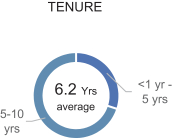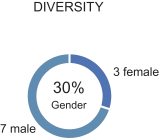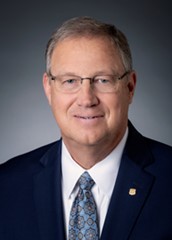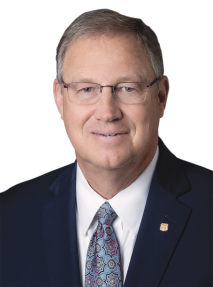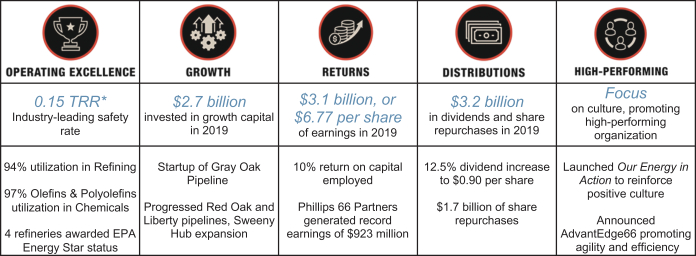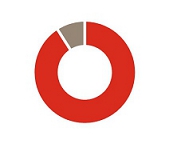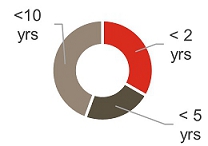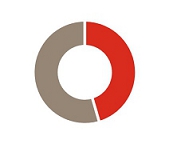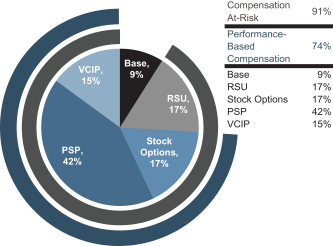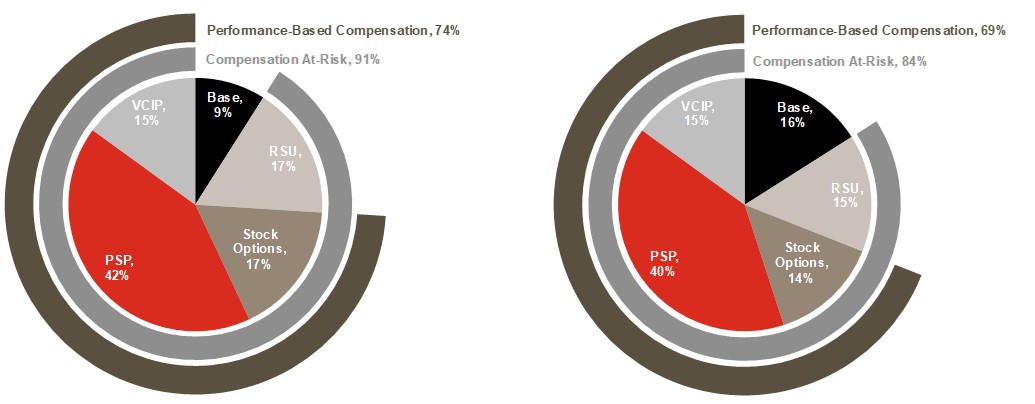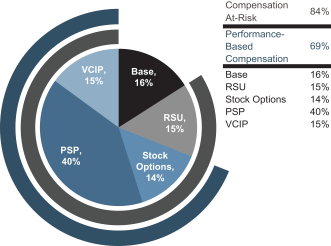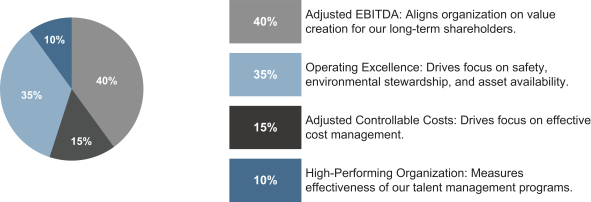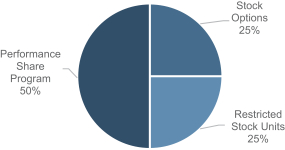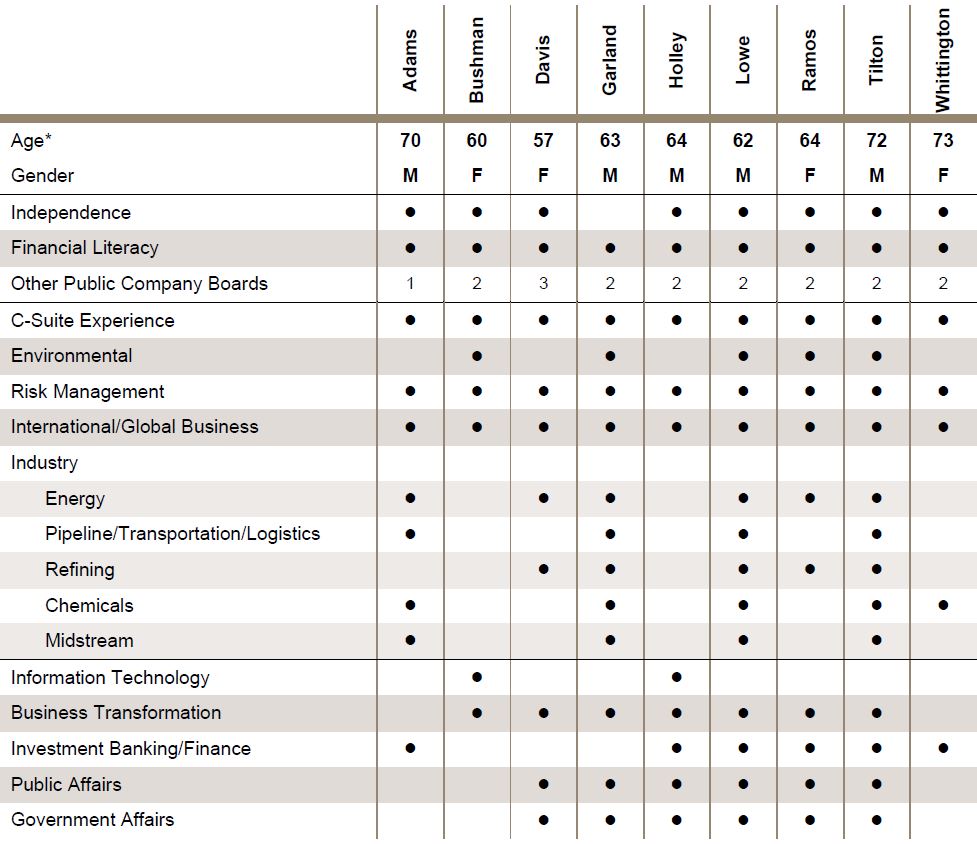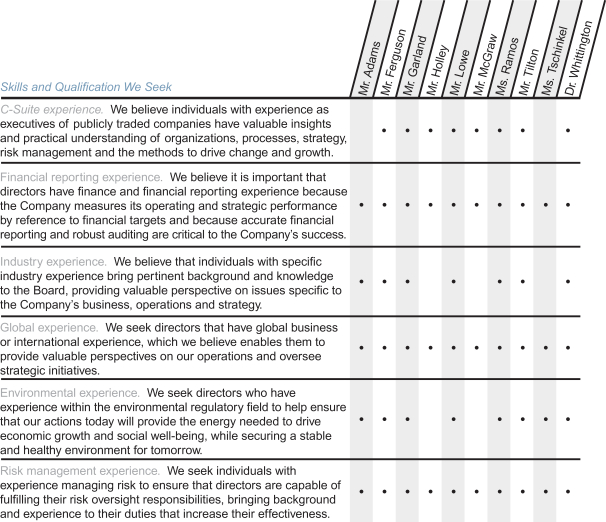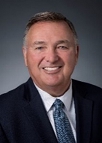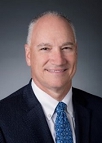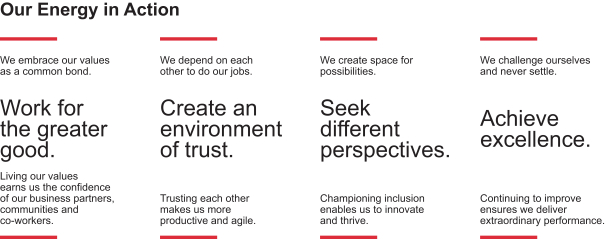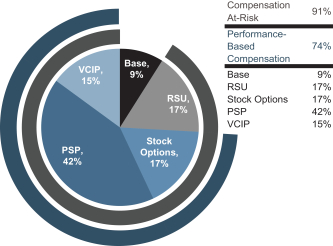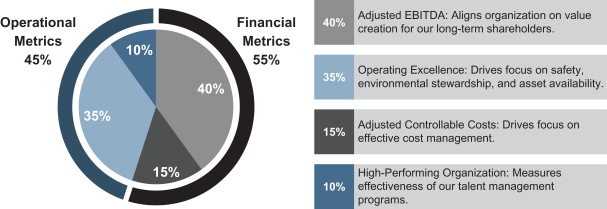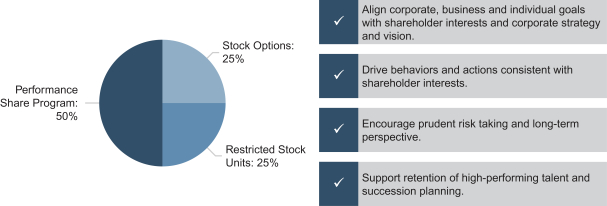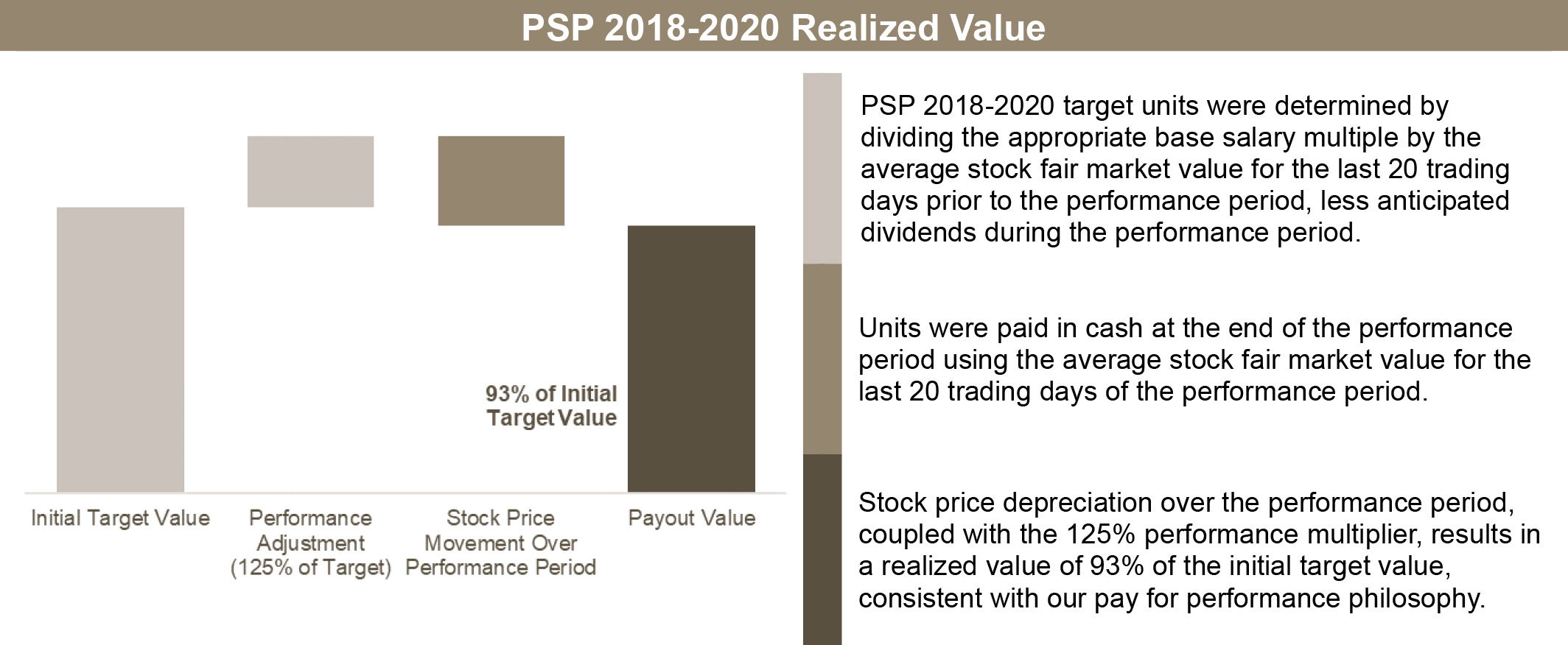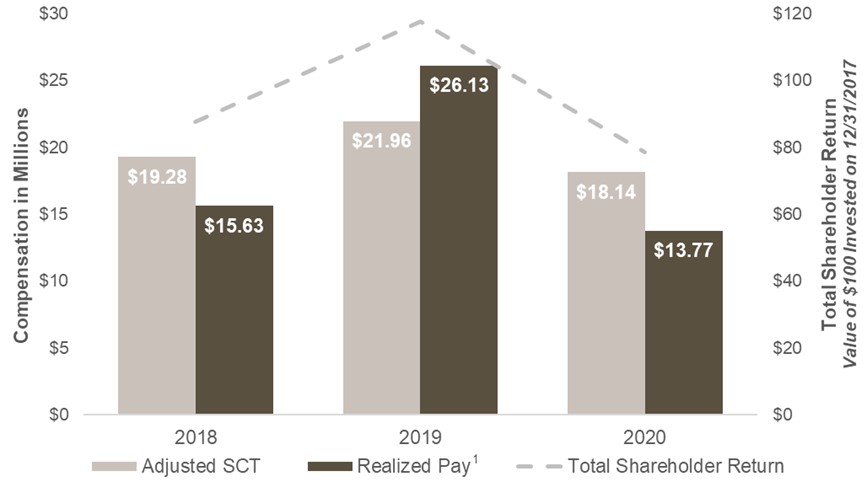(1) | (1)The grant date shown is the date on which the Compensation Committee approved the target awards. (2) Threshold and maximum awards are based on the provisions in the VCIP. Actual awards earned can range from 0 to 200% of the target awards, with a further possible adjustment of +/–50% of the target award depending on individual performance. The Compensation Committee retains the authority to make awards under the program and to use its judgment in adjusting awards, including making awards greater than the amounts shown in the table above, provided the award does not exceed amounts permitted under the 2013 Omnibus Stock and Performance Incentive Plan of Phillips 66. Actual payouts under the annual bonus program for 2020 are calculated using base salary earned in 2020 and reflected in the "Non-Equity Incentive Plan Compensation" column of the SUMMARY COMPENSATION TABLE. (3) Threshold and maximum awards are based on the provisions of the PSP. Actual awards earned range from 0 to 200% of the target. Performance periods under the PSP cover a three-year period, and because a new three-year period commences each year, there could be three overlapping performance periods ongoing. In 2020, targets were set with respect to an award for the performance period beginning in 2020 and ending in 2022. The Compensation Committee retains authority to make awards under the PSP using its judgment, including making awards greater than the maximum payout shown in the table above, provided the award does not exceed amounts permitted under the 2013 Omnibus Stock and Performance Incentive Plan of Phillips 66. (4) RSUs were granted in 2020 and will vest in 2023. | PHILLIPS 66 PROXY STATEMENT 2021 53 |
(2) | Threshold and maximum awards are based on the provisions in the VCIP. Actual awards earned can range from 0 to 200% of the target awards, with a further possible adjustment of +/–50% of the target award depending on individual performance. The Compensation Committee retains the authority to make awards under the program and to use its judgment in adjusting awards, including making awards greater than the amounts shown in the table above, provided the award does not exceed amounts permitted under the 2013 Omnibus Stock and Performance Incentive Plan of Phillips 66. Actual payouts under the annual bonus program for 2019 are calculated using base salary earned in 2019 and reflected in the“Non-Equity Incentive Plan Compensation” column of theSUMMARY COMPENSATION TABLE.
|
(3) | Threshold and maximum awards are based on the provisions of the PSP. Actual awards earned can range from 0 to 200% of the target awards. Performance periods under the PSP cover a three-year period, and since a new three-year period commences each year, there could be three overlapping performance periods ongoing at any time. In 2019, targets for each NEO were set with respect to an award for the three-year performance period beginning in 2019 and ending in 2021. The Compensation Committee retains the authority to make awards under the PSP using its judgment, including making awards greater than the maximum payout shown in the table above, provided the award does not exceed amounts permitted under the 2013 Omnibus Stock and Performance Incentive Plan of Phillips 66.
|
(4) | RSUs were granted in 2019 and will vest in 2022.
|
(5) | For equity incentive plan awards, these amounts represent the grant date fair value at target level under the PSP as determined in accordance with GAAP. For Stock Option awards, these amounts represent the grant date fair value of the option awards using a Black-Scholes-Merton-based methodology. Actual value realized upon option exercise depends on market prices at the time of exercise. For other stock awards, these amounts represent the grant date fair value of the RSU awards determined in accordance with GAAP. See Note 20—Share-Based Compensation Plans in the Notes to Consolidated Financial Statements in our 2019Form 10-K, for a discussion of the relevant assumptions used in this determination.
|
44 2020 PROXY STATEMENT
EXECUTIVE COMPENSATION TABLES (5) For equity incentive plan awards, these amounts represent the grant date fair value at target level under the PSP as determined in accordance with GAAP. For Stock Option awards, these amounts represent the grant date fair value of the option awards using a Black-Scholes-Merton-based methodology. Actual value realized upon option exercise depends on market prices at the time of exercise. For other stock awards, these amounts represent the grant date fair value of the RSU awards determined in accordance with GAAP. See Note 20—Share-Based Compensation Plans in the Notes to Consolidated Financial Statements in our 2020 Form 10-K, for a discussion of the relevant assumptions used in this determination. OUTSTANDING EQUITY AWARDS AT FISCAL YEAR END The following table lists outstanding Phillips 66 equity grants for each NEO as of December 31, 2019.2020. | | | OPTION AWARDS (1) | STOCK AWARDS | | NAME | GRANT DATE | NUMBER OF
SECURITIES
UNDERLYING
UNEXERCISED
OPTIONS
EXERCISABLE
(2)(#) | NUMBER OF
SECURITIES
UNDERLYING
UNEXERCISED
OPTIONS
UNEXERCISABLE(#) | OPTION
EXERCISE
PRICE ($) | OPTION
EXPIRATION
DATE | NUMBER OF
SHARES OR
UNITS OF
STOCK
THAT HAVE
NOT VESTED
(3)(#) | MARKET
VALUE OF
SHARES
OR UNITS
OF
STOCK
THAT
HAVE
NOT
VESTED
($) | EQUITY
INCENTIVE
PLAN
AWARDS:
NUMBER OF
UNEARNED
SHARES,
UNITS OR
OTHER
RIGHTS
THAT HAVE
NOT VESTED
(4) (#) | EQUITY
INCENTIVE
PLAN
AWARDS:
MARKET OR
PAYOUT
VALUE
OF UNEARNED
SHARES, UNITS
OR OTHER
RIGHTS THAT
HAVE NOT
VESTED
($) | | Greg Garland | 2/7/2013 | 158,500 | | — | | 62.170 | | 2/7/2023 | — | — | — | — | | 2/6/2014 | 126,300 | | — | | 72.255 | | 2/6/2024 | — | — | — | — | | 2/3/2015 | 146,700 | | — | | 74.135 | | 2/3/2025 | — | — | — | — | | 2/2/2016 | 169,400 | | — | | 78.620 | | 2/2/2026 | — | — | — | — | | 2/7/2017 | 174,000 | | — | | 78.475 | | 2/7/2027 | — | — | — | — | | 2/6/2018 | 98,000 | | 49,000 | | 94.850 | | 2/6/2028 | — | — | — | — | | 2/5/2019 | 59,566 | | 119,134 | | 94.968 | | 2/5/2029 | — | — | — | — | | 2/4/2020 | — | | 212,100 | | 89.570 | | 2/4/2030 | — | — | — | — | | | — | | — | | — | | — | | 98,698 | 6,902,938 | 292,900 | 20,485,426 | | Kevin Mitchell | 2/3/2015 | 9,900 | | — | | 74.135 | | 2/3/2025 | — | — | — | — | | 2/2/2016 | 30,800 | | — | | 78.620 | | 2/2/2026 | — | — | — | — | | 2/7/2017 | 31,700 | | — | | 78.475 | | 2/7/2027 | — | — | — | — | | 2/6/2018 | 29,066 | | 14,534 | | 94.850 | | 2/6/2028 | — | — | — | — | | 2/5/2019 | 17,766 | | 35,534 | | 94.968 | | 2/5/2029 | — | — | — | — | | 2/4/2020 | — | | 63,200 | | 89.570 | | 2/4/2030 | | | | | | | — | | — | | — | | — | | 33,525 | 2,344,739 | 95,966 | 6,711,862 | | Robert Herman | 2/7/2013 | 12,300 | | — | | 62.170 | | 2/7/2023 | — | — | — | — | | 2/6/2014 | 11,400 | | — | | 72.255 | | 2/6/2024 | — | — | — | — | | 2/3/2015 | 23,500 | | — | | 74.135 | | 2/3/2025 | — | — | — | — | | 2/2/2016 | 28,800 | | — | | 78.620 | | 2/2/2026 | — | — | — | — | | 2/7/2017 | 30,700 | | — | | 78.475 | | 2/7/2027 | — | — | — | — | | 2/6/2018 | 17,333 | | 8,667 | | 94.850 | | 2/6/2028 | — | — | — | — | | 2/5/2019 | 10,500 | | 21,000 | | 94.968 | | 2/5/2029 | — | — | — | — | | 2/4/2020 | — | | 48,500 | | 89.570 | | 2/4/2030 | | | | | | | — | | — | | — | | — | | 69,177 | 4,838,239 | 73,284 | 5,125,483 | | Paula Johnson | 2/7/2013 | 12,000 | | — | | 62.170 | | 2/7/2023 | — | — | — | — | | 2/6/2014 | 19,600 | | — | | 72.255 | | 2/6/2024 | — | — | — | — | | 2/3/2015 | 25,100 | | — | | 74.135 | | 2/3/2025 | — | — | — | — | | 2/2/2016 | 32,800 | | — | | 78.620 | | 2/2/2026 | — | — | — | — | | 2/7/2017 | 34,300 | | — | | 78.475 | | 2/7/2027 | — | — | — | — | | 2/6/2018 | 19,933 | | 9,967 | | 94.850 | | 2/6/2028 | — | — | — | — | | 2/5/2019 | 12,166 | | 24,334 | | 94.968 | | 2/5/2029 | — | — | — | — | | 2/4/2020 | — | | 45,900 | | 89.570 | | 2/4/2030 | | | | | | | — | | — | | — | | — | | 22,612 | 1,581,483 | 67,484 | 4,719,831 | | Tim Roberts | 4/4/2016 | 28,400 | | — | | 85.973 | | 4/4/2026 | — | — | — | — | | 2/7/2017 | 30,700 | | — | | 78.475 | | 2/7/2027 | — | — | — | — | | 2/6/2018 | 17,266 | | 8,634 | | 94.850 | | 2/6/2028 | — | — | — | — | | 2/5/2019 | 10,500 | | 21,000 | | 94.968 | | 2/5/2029 | — | — | — | — | | 2/4/2020 | — | | 48,500 | | 89.570 | | 2/4/2030 | | | | | | | — | | — | | — | | — | | 22,864 | 1,599,108 | 73,440 | 5,136,394 | | | | | | | | | | | | | | | | |
54 PHILLIPS 66 PROXY STATEMENT 2021 | |
| | | | | | | | | | | | | | | | | | | | | | | | | | | | | | | | | | | | | | | | | | | OPTION AWARDS(1) | | | STOCK AWARDS | | NAME | | GRANT
DATE | | | NUMBER OF
SECURITIES
UNDERLYING
UNEXERCISED
OPTIONS
EXERCISABLE(2)
(#) | | | NUMBER OF
SECURITIES
UNDERLYING
UNEXERCISED
OPTIONS
UNEXERCISABLE (#) | | | OPTION
EXERCISE
PRICE
($) | | | OPTION
EXPIRATION
DATE | | | NUMBER OF
SHARES OR
UNITS OF
STOCK THAT
HAVE NOT
VESTED(3)
(#) | | | MARKET
VALUE OF
SHARES OR
UNITS OF
STOCK THAT
HAVE NOT
VESTED
($) | | | EQUITY
INCENTIVE
PLAN
AWARDS:
NUMBER OF
UNEARNED
SHARES,
UNITS OR
OTHER
RIGHTS THAT
HAVE NOT
VESTED(4)
(#) | | | EQUITY
INCENTIVE
PLAN
AWARDS:
MARKET OR
PAYOUT
VALUE OF
UNEARNED
SHARES,
UNITS OR
OTHER RIGHTS
THAT HAVE
NOT VESTED
($) | | Greg Garland | | | 2/7/2013 | | | | 158,500 | | | | — | | | | 62.170 | | | | 2/7/2023 | | | | — | | | | — | | | | — | | | | — | | | | | 2/6/2014 | | | | 126,300 | | | | — | | | | 72.255 | | | | 2/6/2024 | | | | — | | | | — | | | | — | | | | — | | | | | 2/3/2015 | | | | 146,700 | | | | — | | | | 74.135 | | | | 2/3/2025 | | | | — | | | | — | | | | — | | | | — | | | | | 2/2/2016 | | | | 169,400 | | | | — | | | | 78.620 | | | | 2/2/2026 | | | | — | | | | — | | | | — | | | | — | | | | | 2/7/2017 | | | | 116,000 | | | | 58,000 | | | | 78.475 | | | | 2/7/2027 | | | | — | | | | — | | | | — | | | | — | | | | | 2/6/2018 | | | | 49,000 | | | | 98,000 | | | | 94.850 | | | | 2/6/2028 | | | | — | | | | — | | | | — | | | | — | | | | | 2/5/2019 | | | | — | | | | 178,700 | | | | 94.968 | | | | 2/5/2029 | | | | — | | | | — | | | | — | | | | — | | | | | | | | | — | | | | — | | | | — | | | | — | | | | 297,381 | | | | 33,131,217 | | | | 294,568 | | | | 32,817,821 | | Kevin Mitchell | | | 2/3/2015 | | | | 9,900 | | | | — | | | | 74.135 | | | | 2/3/2025 | | | | — | | | | — | | | | — | | | | — | | | | | 2/2/2016 | | | | 30,800 | | | | — | | | | 78.620 | | | | 2/2/2026 | | | | — | | | | — | | | | — | | | | — | | | | | 2/7/2017 | | | | 21,133 | | | | 10,567 | | | | 78.475 | | | | 2/7/2027 | | | | — | | | | — | | | | — | | | | — | | | | | 2/6/2018 | | | | 14,533 | | | | 29,067 | | | | 94.850 | | | | 2/6/2028 | | | | — | | | | — | | | | — | | | | — | | | | | 2/5/2019 | | | | — | | | | 53,300 | | | | 94.968 | | | | 2/5/2029 | | | | — | | | | — | | | | — | | | | — | | | | | | | | | — | | | | — | | | | — | | | | — | | | | 28,115 | | | | 3,132,292 | | | | 96,280 | | | | 10,726,555 | | Robert Herman | | | 2/7/2013 | | | | 12,300 | | | | — | | | | 62.170 | | | | 2/7/2023 | | | | — | | | | — | | | | — | | | | — | | | | | 2/6/2014 | | | | 11,400 | | | | — | | | | 72.255 | | | | 2/6/2024 | | | | — | | | | — | | | | — | | | | — | | | | | 2/3/2015 | | | | 23,500 | | | | — | | | | 74.135 | | | | 2/3/2025 | | | | — | | | | — | | | | — | | | | — | | | | | 2/2/2016 | | | | 28,800 | | | | — | | | | 78.620 | | | | 2/2/2026 | | | | — | | | | — | | | | — | | | | — | | | | | 2/7/2017 | | | | 20,466 | | | | 10,234 | | | | 78.475 | | | | 2/7/2027 | | | | — | | | | — | | | | — | | | | — | | | | | 2/6/2018 | | | | 8,666 | | | | 17,334 | | | | 94.850 | | | | 2/6/2028 | | | | — | | | | — | | | | — | | | | — | | | | | 2/5/2019 | | | | — | | | | 31,500 | | | | 94.968 | | | | 2/5/2029 | | | | — | | | | — | | | | — | | | | — | | | | | | | | | — | | | | — | | | | — | | | | — | | | | 67,101 | | | | 7,475,722 | | | | 69,538 | | | | 7,747,229 | | Paula Johnson | | | 2/7/2013 | | | | 12,000 | | | | — | | | | 62.170 | | | | 2/7/2023 | | | | — | | | | — | | | | — | | | | — | | | | | 2/6/2014 | | | | 19,600 | | | | — | | | | 72.255 | | | | 2/6/2024 | | | | — | | | | — | | | | — | | | | — | | | | | 2/3/2015 | | | | 25,100 | | | | — | | | | 74.135 | | | | 2/3/2025 | | | | — | | | | — | | | | — | | | | — | | | | | 2/2/2016 | | | | 32,800 | | | | — | | | | 78.620 | | | | 2/2/2026 | | | | — | | | | — | | | | — | | | | — | | | | | 2/7/2017 | | | | 22,866 | | | | 11,434 | | | | 78.475 | | | | 2/7/2027 | | | | — | | | | — | | | | — | | | | — | | | | | 2/6/2018 | | | | 9,966 | | | | 19,934 | | | | 94.850 | | | | 2/6/2028 | | | | — | | | | — | | | | — | | | | — | | | | | 2/5/2019 | | | | — | | | | 36,500 | | | | 94.968 | | | | 2/5/2029 | | | | — | | | | — | | | | — | | | | — | | | | | | | | | — | | | | — | | | | — | | | | — | | | | 49,125 | | | | 5,473,016 | | | | 65,986 | | | | 7,351,500 | | Tim Roberts | | | 4/4/2016 | | | | 28,400 | | | | — | | | | 85.973 | | | | 4/4/2026 | | | | — | | | | — | | | | — | | | | — | | | | | 2/7/2017 | | | | 20,466 | | | | 10,234 | | | | 78.475 | | | | 2/7/2027 | | | | — | | | | — | | | | — | | | | — | | | | | 2/6/2018 | | | | 8,633 | | | | 17,267 | | | | 94.850 | | | | 2/6/2028 | | | | — | | | | — | | | | — | | | | — | | | | | 2/5/2019 | | | | — | | | | 31,500 | | | | 94.968 | | | | 2/5/2029 | | | | — | | | | — | | | | — | | | | — | | | | | | | | | | — | | | | — | | | | — | | | | — | | | | 19,232 | | | | 2,142,637 | | | | 66,620 | | | | 7,422,134 | |
EXECUTIVE COMPENSATION TABLES (1) | (1) | All options shown in the table have a maximum term for exercise of ten years from the grant date. Under certain circumstances, the terms for exercise may be shorter, and in certain circumstances, the options may be forfeited and cancelled. All awards shown in the table have associated restrictions upon transferability. |
2020 PROXY STATEMENT 45
EXECUTIVE COMPENSATION TABLES
(2) | (2) | The options shown in this column vested and became exercisable in 20192020 or prior years (although under certain termination circumstances, the options may still be forfeited). Options become exercisable inone-third increments on the first, second and third anniversaries of the grant date. |
(3) | (3) | These amounts include unvested restricted stock and RSUs awarded under the PSP for performance periods that ended on or before December 31, 2014, and awarded as annual awards.2014. All awards for performance periods that ended on or before December 31, 2014, continue to have restrictions upon transferability. Restrictions on PSP awards for performance periods that ended on or before December 31, 2010, lapse upon separation from service. Restrictions on PSP awards for later performance periods lapse five years from the grant date unless the NEO elected prior to the beginning of the performance period to defer lapsing of the restrictions until separation from service. Awards are subject to forfeiture if, prior to lapsing, the NEO separates from service for a reason other than death, disability, layoff, retirement after reaching age 55 with five years of service, or after a change of control, although the Compensation Committee has the authority to waive forfeiture. The awards have no voting rights, but do entitle the holder to receive dividend equivalents in cash. The value of the awards reflects the closing price of our common stock, as reported on the NYSE, on December 31, 20192020 ($111.41)69.94). |
(4) | (4) | Reflects potential awards from ongoing performance periods under the PSP for performance periods ending December 31, 2020,2021 and December 31, 2021.2022. These awards are shown at maximum; however, there is no assurance that awards will be granted at, below or above target after the end of the relevant performance periods, as the determination to make a grant and the amount of any grant is within the judgment of the Compensation Committee. Until an actual grant is made, these unearned awards pay no dividend equivalents. The value of these unearned awards reflects the closing price of our common stock, as reported on the NYSE, on December 31, 20192020 ($111.41)69.94). |
OPTION EXERCISES AND STOCK VESTED FOR 20192020 The following table summarizes the value received from stock option exercises and stock grants vested during 2019:2020: | | OPTION AWARDS | STOCK AWARDS (1) | | NAME | NUMBER OF SHARES ACQUIRED
ON EXERCISE
(#) | VALUE REALIZED
UPON EXERCISE
($) | NUMBER OF SHARES ACQUIRED ON VESTING
(#) | VALUE REALIZED UPON VESTING
($) | | Greg Garland | — | — | 319,292 | 26,857,890 | | Kevin Mitchell | — | — | 33,931 | 2,461,625 | | Robert Herman | — | — | 25,618 | 1,895,314 | | Paula Johnson | — | — | 54,035 | 4,443,795 | | Tim Roberts | — | — | 24,871 | 1,839,209 |
(1) Stock awards include RSUs that vested during the year, as well as the PSP 2018-2020 award that vested on December 31, 2020 and was paid out in cash in early 2021. The PSP awards were as follows: Mr. Garland, 83,208 units valued at | | | | | | | | | | | | | | | | | | | | OPTION AWARDS | | | STOCK AWARDS(1) | | NAME | | NUMBER OF SHARES
ACQUIRED ON EXERCISE
(#) | | | VALUE REALIZED UPON
EXERCISE
($) | | | NUMBER OF SHARES
ACQUIRED ON VESTING
(#) | | | VALUE REALIZED UPON
VESTING
($) | | Greg Garland | | | 42,728 | | | | 2,802,154 | | | | 333,687 | | | | 33,714,892 | | Kevin Mitchell | | | — | | | | — | | | | 32,494 | | | | 3,531,910 | | Robert Herman | | | 47,433 | | | | 3,374,428 | | | | 30,056 | | | | 3,267,034 | | Paula Johnson | | | — | | | | — | | | | 51,943 | | | | 5,373,632 | | Tim Roberts | | | — | | | | — | | | | 27,323 | | | | 2,971,096 | |
(1) | Stock awards include RSUs that vested during the year, as well as the PSP 2017-2019 award that vested on December 31, 2019, and was paid out in cash in early 2020. The PSP awards were as follows: Mr. Garland, 115,275 units valued at $12,994,928; Mr. Mitchell, 25,229 units valued at $2,844,060; Mr. Herman, 23,314 units valued at $2,628,183; Ms. Johnson, 24,991 units valued at $2,817,230; and Mr. Roberts, 21,283 units valued at $2,399,228.PHILLIPS 66 PROXY STATEMENT 2021 55
|
EXECUTIVE COMPENSATION TABLES $5,672,888; Mr. Mitchell, 27,096 units valued at $1,847,329; Mr. Herman, 18,299 units valued at $1,247,575; Ms. Johnson, 18,620 units valued at $1,269,459; and Mr. Roberts, 18,254 units valued at $1,244,507. PENSION BENEFITS AS OF DECEMBER 31, 20192020 Our defined benefit pension plan covering NEOs, the Phillips 66 Retirement Plan, consists of multiple titles with different terms. NEOs are only eligible to participate in one title at any time but may have frozen benefits under one or more other titles. | | | | | | | | | | TITLE I | | TITLE II(1) | | TITLE IV | Current Eligibility | | Mr. Garland | | Mr. Herman(4), Mr. Mitchell,Mr. Roberts | | Ms. Johnson | Normal Retirement | | Age 65 | | Age 65 | | Age 65 | Early Retirement(2) | | Age 55 with five years of service or if laid off during or after the year in which the participant reaches age 50 | | Executives may receive their vested benefit upon termination of employment at any age | | Age 50 with ten years of service | Benefit Calculation(2) | | Calculated as the product of 1.6% times years of credited service multiplied by the final average eligible earnings | | Based on monthly pay and interest credits to a nominal cash balance account created on the first day of the month after an executive’sexecutive's hire date. Pay credits are equal to a percentage of total salary and annual bonus. | | Calculated as the product of 1.6% times years of credited service multiplied by the final average eligible earnings | Final Average Earnings Calculation | | Calculated using the three highest compensation years in the last ten calendar years before retirement plus the year of retirement | | N/A | | Calculated using the higher of the highest three years of compensation or the highest 36 months of compensation | Eligible Pension Compensation(3) | | Includes salary and annual bonus | | Includes salary and annual bonus | | Includes salary and annual bonus | Benefit Vesting | | All participants are vested in this title | | Employees vest after three years of service | | All participants are vested in this title | Payment Types | | Allows payments in the form of several annuity types or a single lump sum | | | IRS limitations | | Benefits under all Titles are limited by the IRC. In 2019,2020, the compensation limit was $280,000.$285,000. The IRC also limits the annual benefit available under these Titles expressed as an annuity. In 2019,2020, that limit was $225,000$230,000 (reduced actuarially for ages below 62). |
(1) | (1) | NEOs whose combined years of age and service total less than 44 receive a 6% pay credit, those with 44 through 65 receive a 7% pay credit and those with 66 or more receive a 9% pay credit. Interest credits are applied to the cash balance account each month. This credit is calculated by multiplying the value of the account by the interest credit rate, based on30-year U.S. Treasury security rates adjusted quarterly. |
(2) | (2) | An early benefit reduction is calculated on Title I by reducing the benefit 5% for each year before age 60 that benefits are paid. An early benefit reduction is calculated on Title III by reducing the benefit 6.67% for each year before age 60 that benefits are paid, unless the participant has at least 85 points awarded, with one point for each year of age and one point for each year of service. Title IV early benefit reduction is calculated by reducing the benefit by 5% per year for each year before age 57 that benefits are paid and 4% per year for benefits that are paid between ages 57 and 60. The benefit calculation for Titles I, III and IV is reduced by the product of 1.5% of the annual primary social security benefit multiplied by years of credited service, although a reduction limit of 50% of the primary Social Security benefit may apply. |
(3) | (3) | Under Title I, if an executive receives layoff benefits, then the eligible compensation calculation also includes the annualized salary for the year of layoff (rather than the actual salary for that year) and years of service are increased by any period for which layoff benefits are calculated. |
(4) | (4) | Mr. Herman has a frozen benefit under Title III from prior years of service with predecessor companies. Under Title III, normal retirement is age 65 and early retirement is age 55 with 10 years of service. Title III is similar to Title I, except that bonus is not eligible pension compensation and payout is made in the form of an annuity. |
56 PHILLIPS 66 PROXY STATEMENT 2021 | |
EXECUTIVE COMPENSATION TABLES The following table lists the pension program participation and actuarial present value of each NEO’sNEO's defined benefit pension as of December 31, 2019.2020. | NAME | PLAN NAME | NUMBER OF YEARS CREDITED SERVICE (1) (#) | PRESENT VALUE OF ACCUMULATED BENEFIT ($) | PAYMENTS DURING LAST FISCAL YEAR
($) | | Greg Garland | Phillips 66 Retirement Plan - Title I | 31 | 2,076,817 | — | | | Phillips 66 Key Employee Supplemental Retirement Plan (2) | — | 51,817,577 | — | | Kevin Mitchell | Phillips 66 Retirement Plan - Title II | 7 | 165,494 | — | | | Phillips 66 Key Employee Supplemental Retirement Plan (2) | — | 777,384 | — | | Robert Herman | Phillips 66 Retirement Plan - Title II | 15 | 431,255 | — | | | Phillips 66 Retirement Plan - Title III | 23 | 716,291 | — | | | Phillips 66 Key Employee Supplemental Retirement Plan (2) | — | 1,244,447 | — | | Paula Johnson | Phillips 66 Retirement Plan - Title IV | 18 | 1,115,296 | — | | | Phillips 66 Key Employee Supplemental Retirement Plan (2) | — | 8,042,831 | — | | Tim Roberts | Phillips 66 Retirement Plan - Title II | 5 | 96,489 | — | | | Phillips 66 Key Employee Supplemental Retirement Plan (2) | — | 453,129 | — |
(1)Years of credited service include service recognized under the predecessor ConocoPhillips plans from which these plans were spun off effective May 1, 2012. Credited Service displays the number of years the NEO was in each applicable formula. (2) The Phillips 66 Key Employee Supplemental Retirement Plan restores Company-sponsored benefits capped under the qualified defined benefit pension plan due to IRC limits. All employees, including our NEOs, are eligible to participate in the plan. | | | | | | | | | | | | | | | NAME | | PLAN NAME | | NUMBER OF YEARS
CREDITED SERVICE(1)
(#) | | | PRESENT VALUE OF
ACCUMULATED
BENEFIT ($) | | | PAYMENTS DURING
LAST FISCAL YEAR
($) | | Greg Garland | | Phillips 66 Retirement Plan - Title I | | | 30 | | | | 1,891,256 | | | | — | | | | Phillips 66 Key Employee Supplemental Retirement Plan(2) | | | — | | | | 45,151,254 | | | | — | | Kevin Mitchell | | Phillips 66 Retirement Plan - Title II | | | 6 | | | | 134,673 | | | | — | | | | Phillips 66 Key Employee Supplemental Retirement Plan(2) | | | — | | | | 549,659 | | | | — | | Robert Herman | | Phillips 66 Retirement Plan - Title II | | | 14 | | | | 393,783 | | | | — | | | | Phillips 66 Retirement Plan - Title III | | | 22 | | | | 634,293 | | | | — | | | | Phillips 66 Key Employee Supplemental Retirement Plan(2) | | | — | | | | 1,045,467 | | | | — | | Paula Johnson | | Phillips 66 Retirement Plan - Title IV | | | 17 | | | | 923,584 | | | | — | | | | Phillips 66 Key Employee Supplemental Retirement Plan(2) | | | — | | | | 6,049,191 | | | | — | | Tim Roberts | | Phillips 66 Retirement Plan - Title II | | | 4 | | | | 49,568 | | | | — | | | | | Phillips 66 Key Employee Supplemental Retirement Plan(2) | | | — | | | | 202,306 | | | | — | |
Understanding the Annual Change in Pension Value (1)No modifications to pension | Years
ü There were no modifications to our existing pension program in 2020 | | Change in value | ü The value of credited service include service recognized under the predecessor ConocoPhillipstraditional pension plans fromis particularly sensitive to interest rate movement, which these plans were spun off effective May 1, 2012. Credited Service displays the numberis outside of years the NEO was in each applicable formula.Company control ü While our short-term and long-term incentive programs are based entirely on performance, pension value is not performance based and does not reflect or reward Company performance | | Pension plan going forward | ü The Compensation Committee will continue to assess our pension program to ensure viability as an attraction and retention tool |
(2) | The Phillips 66 Key Employee Supplemental Retirement Plan restores Company-sponsored benefits capped under the qualified defined benefit pension plan due to IRC limits. All employees, including our NEOs, are eligible to participate in the plan.
|
NONQUALIFIED DEFERRED COMPENSATION Our NEOs are eligible to participate in two nonqualified deferred compensation plans, the Phillips 66 KEDCP and the Phillips 66 DCMP. The KEDCP allows NEOs to defer up to 50% of their salary and up to 100% of their VCIP. The default distribution option is a lump sum payment paid at least six months after separation from service. NEOs may elect to defer payments from one to five years, and to receive annual, semiannual or quarterly payments for a period of up to fifteen years. NEOs may also elect to defer their VCIP to a specific date in the future. The DCMP is a nonqualified restoration plan for employer contributions that cannot be made to our 401(k) plan either due to an NEO’sNEO's salary deferral under the KEDCP or due to the IRC annual limit on compensation that may be taken into account under a qualified plan. Distributions are made as a lump sum six months after separation | PHILLIPS 66 PROXY STATEMENT 2021 57 |
EXECUTIVE COMPENSATION TABLES from service, unless the NEO elects to receive one to fifteen annual payments beginning at least one year after separation from service. Each NEO directs investments of his or her individual accounts under the KEDCP and DCMP. Both plans provide a broad range of market-based investments, that may be changed daily. No investment provides above-market returns. The aggregate performance of these investments is reflected in theNONQUALIFIED DEFERRED COMPENSATION table below. Benefits due under these plans are paid from our general assets, although we also maintain rabbi trusts that may be used to pay benefits. The trusts and the funds held in them are Company assets. In the event of our bankruptcy, NEOs would be unsecured general creditors. 48 2020 PROXY STATEMENT
EXECUTIVE COMPENSATION TABLES
The following table provides information on nonqualified deferred compensation as of December 31, 2019:2020: | NAME | APPLICABLE PLAN (1) | BEGINNING
BALANCE
(2) ($) | EXECUTIVE
CONTRIBUTIONS
IN LAST
FISCAL YEAR
($) | COMPANY
CONTRIBUTIONS
IN THE LAST
FISCAL YEAR (3) ($) | AGGREGATE
EARNINGS
IN LAST
FISCAL YEAR
(4) ($) | AGGREGATE
WITHDRAWALS/
DISTRIBUTIONS ($) | AGGREGATE
BALANCE
AT LAST
FISCAL
YEAR END (5) ($) | | Greg Garland | Phillips 66 Defined Contribution
Make-Up Plan | 2,385,595 | — | 534,983 | 24,002 | — | 2,944,579 | Phillips 66 Key Employee
Deferred Compensation Plan | 1,435,135 | — | — | (383,312) | — | 1,051,822 | | Kevin Mitchell | Phillips 66 Defined Contribution
Make-Up Plan | 471,936 | — | 192,294 | 82,716 | — | 746,937 | Phillips 66 Key Employee
Deferred Compensation Plan | — | — | — | — | — | — | | Robert Herman | Phillips 66 Defined Contribution
Make-Up Plan | 740,799 | — | 155,612 | (4,175) | — | 892,236 | Phillips 66 Key Employee
Deferred Compensation Plan | 2,525,254 | — | — | 362,366 | — | 2,887,620 | | Paula Johnson | Phillips 66 Defined Contribution
Make-Up Plan | 609,842 | — | 164,494 | 67,150 | — | 841,486 | Phillips 66 Key Employee
Deferred Compensation Plan | — | — | — | — | — | — | | Tim Roberts | Phillips 66 Defined Contribution
Make-Up Plan | 333,783 | — | 164,827 | 64,577 | — | 563,188 | Phillips 66 Key Employee
Deferred Compensation Plan | — | 697,622 | — | 58,845 | — | 756,467 |
(1) We have two defined contribution deferred compensation programs for our executives -- the DCMP and the KEDCP. As of December 31, 2020, participants in these plans had 36 investment options -- 28 of the options were the same as those available in our 401(k) plan and the remaining options were other mutual funds approved by the plan administrator. (2) The beginning balance includes the final Company contribution of fiscal year 2019 (DCMP $6,792 and KEDCP $4,542 for Mr. Garland; DCMP $7,779 for Mr. Mitchell; DCMP $5,051 and KEDCP $22,806 for Mr. Herman; DCMP $6,495 for Ms. Johnson; and DCMP $5,907 for Mr. Roberts). | | | | | | | | | | | | | | | | | | | | | | | | | | | NAME | | APPLICABLE PLAN(1) | | BEGINNING
BALANCE
($) | | | EXECUTIVE
CONTRIBUTIONS
IN LAST FISCAL
YEAR
($) | | | COMPANY
CONTRIBUTIONS
IN THE LAST
FISCAL YEAR(2)
($) | | | AGGREGATE
EARNINGS IN
LAST FISCAL
YEAR(3)
($) | | | AGGREGATE WITHDRAWALS/ DISTRIBUTIONS
($) | | | AGGREGATE
BALANCE
AT LAST
FISCAL
YEAR END(4)
($) | | Greg Garland | | Phillips 66 Defined ContributionMake-Up Plan | | | 1,272,963 | | | | — | | | | 758,198 | | | | 347,642 | | | | — | | | | 2,378,803 | | | | Phillips 66 Key Employee Deferred Compensation Plan | | | 1,252,805 | | | | — | | | | — | | | | 177,789 | | | | — | | | | 1,430,593 | | Kevin Mitchell | | Phillips 66 Defined ContributionMake-Up Plan | | | 118,094 | | | | — | | | | 295,365 | | | | 50,689 | | | | — | | | | 464,147 | | | | Phillips 66 Key Employee Deferred Compensation Plan | | | — | | | | — | | | | — | | | | — | | | | — | | | | — | | Robert Herman | | Phillips 66 Defined ContributionMake-Up Plan | | | 397,058 | | | | — | | | | 229,034 | | | | 109,656 | | | | — | | | | 735,748 | | | | Phillips 66 Key Employee Deferred Compensation Plan | | | 1,982,729 | | | | — | | | | — | | | | 519,720 | | | | — | | | | 2,502,448 | | Paula Johnson | | Phillips 66 Defined ContributionMake-Up Plan | | | 255,929 | | | | — | | | | 244,519 | | | | 102,899 | | | | — | | | | 603,347 | | | | Phillips 66 Key Employee Deferred Compensation Plan | | | — | | | | — | | | | — | | | | — | | | | — | | | | — | | Tim Roberts | | Phillips 66 Defined ContributionMake-Up Plan | | | 69,936 | | | | — | | | | 228,922 | | | | 29,018 | | | | — | | | | 327,876 | | | | | Phillips 66 Key Employee Deferred Compensation Plan | | | — | | | | — | | | | — | | | | — | | | | — | | | | — | |
(3) These amounts represent Company contributions under the DCMP. These amounts are also included in the "All Other Compensation" column of the SUMMARY COMPENSATION TABLE. (4) These amounts represent earnings on plan balances from January 1 to December 31, 2020. These amounts are not included in the SUMMARY COMPENSATION TABLE. (5) The total reflects contributions by our NEOs, contributions by us, and earnings on balances prior to 2020; plus contributions by our NEOs, and earnings from January 1, 2020, through December 31, 2020 (shown in the appropriate columns of this table, with amounts that are included in the SUMMARY COMPENSATION TABLE). The total includes all contributions by our NEOs and by us reported in this proxy statement and our proxy statements from prior years as follows: $2,106,109 for Mr. Garland; $580,697 for Mr. Mitchell; $466,016 for Mr. Herman; $750,079 for Ms. Johnson; and $1,115,552 for Mr. Roberts. (1)58 PHILLIPS 66 PROXY STATEMENT 2021 | We have two defined contribution deferred compensation programs for our executives — the DCMP and the KEDCP. As of December 31, 2019, participants in these plans had 36 investment options — 28 of the options were the same as those available in our 401(k) plan and the remaining options were other mutual funds approved by the plan administrator.
|
(2) | These amounts represent Company contributions under the DCMP. These amounts are also included in the “All Other Compensation” column of theSUMMARY COMPENSATION TABLE.
|
(3) | These amounts represent earnings on plan balances from January 1 to December 31, 2019. These amounts are not included in theSUMMARY COMPENSATION TABLE.
|
(4) | EXECUTIVE COMPENSATION TABLES The total reflects contributions by our NEOs, contributions by us, and earnings on balances prior to 2019; plus contributions by our NEOs, and earnings from January 1, 2019, through December 31, 2019 (shown in the appropriate columns of this table, with amounts that are included in theSUMMARY COMPENSATION TABLE). The total includes all contributions by our NEOs and by us reported in this proxy statement and our proxy statements from prior years as follows: $1,571,126 for Mr. Garland; $388,403 for Mr. Mitchell; $310,404 for Mr. Herman; $456,237 for Ms. Johnson; and $253,103 for Mr. Roberts.
|
POTENTIAL PAYMENTS UPON TERMINATION OR CHANGE IN CONTROL Each of our NEOs is expectedOur programs are designed to receivepay out amounts earned during his or her period of employment unless he or shethe employee voluntarily resigns prior to becoming retirement-eligible or is terminated for cause. Although normal retirement age under our benefit plans is 65, early retirement provisions allow receipt of benefits at earlier ages if vesting requirements are met. For our incentive compensation programs (VCIP, RSU, Stock Options, and PSP), early retirement is generally defined as termination at or after the age of 55 with five years of service.
As of December 31, 2019,2020, Mr. Garland, Mr. Herman, and Ms. Johnson were retirement-eligible under both our benefit plans and our compensation programs. Therefore, as of December 31, 2019,2020, a voluntary resignation of Mr. Garland, Mr. Herman, or Ms. Johnson, would have been treated as a retirement, and each would have retained all awards earned under the current and earlier programs. As such, awards under these programs are not included in the amounts reflected in the table below. Please see theOUTSTANDING EQUITY AWARDS AT FISCAL YEAR END table for more information. Our compensation programs provide for the following upon retirement: Cash Payments.Cash payments include VCIP earned during the fiscal year, amounts contributed and vested under our defined contribution plans, and amounts accrued and vested under our pension plans. Equity.Equity considerations include grants under the PSP for ongoing performance periods in which the executive participated for at least one year, previously granted restricted stock and RSUs, and previously granted stock option awards exercisable through the original term. 2020 PROXY STATEMENT 49
EXECUTIVE COMPENSATION TABLES
The table at the end of this section summarizes the potential additional value of the benefits to be received by each NEO as of December 31, 2019,2020, through the Phillips 66 ESP due to an involuntary termination without cause or through the Phillips 66 CICSP due to a change in control event. Benefits that would be available generally to all or substantially all salaried employees on the U.S. payroll are not included in the amounts shown. Executives are not entitled to receive benefits under both the ESP and the CICSP as a result of the same event. These two plans have the following in common: amounts payable under both are offset by any payments or benefits payable under any of our other plans; benefits under both may also be reduced in the event of willful and bad faith conduct demonstrably injurious to the Company; and both are Company plans under which awards and payments are subject to clawback provisions and to forfeiture or recoupment, in whole or in part, under applicable law, including the Sarbanes-Oxley Act and the Dodd-Frank Act. Executive Severance Plan The ESP provides that if ana NEO separates due to an involuntary termination without cause, the executive will receive the following benefits, which may vary depending on salary grade level. Cash Severance Payments. ESP cash severance payments include: a lump sum payment equal to one andone-half or two times the sum of the executive’sexecutive's base salary and current target annual bonus; a lump sum payment equal to the present value of the increase in pension benefits that would result from crediting the executive with an additional one andone-half or two years of age and service under the pension plan; and a lump sum payment generally equal to the Company contribution for active employees toward the cost of certain welfare benefits for an additional one andone-half or two years. | PHILLIPS 66 PROXY STATEMENT 2021 59 |
EXECUTIVE COMPENSATION TABLES Accelerated Equity.Layoff treatment under our compensation plans generally allows the executive to retain a prorated portion of grants held less than one year and full grants held for one year or more of Restricted Stock, RSUs, and Stock Options, and maintain eligibility for prorated PSP awards for ongoing periods in which he or she had participated for at least one year. Change in Control Severance Plan The CICSP provides that if, within two years of a change in control of the Company, an executive’sexecutive's employment is terminated by the employer other than for cause, or by the executive for good reason, the executive will receive the following benefits, which may vary depending on salary grade level. CICSP benefits include: Cash Severance Payments.CICSP cash severance payments include: a lump sum payment equal to two or three times the sum of the executive’sexecutive's base salary and the higher of the current target annual bonus or the average of the annual bonuses paid for the previous two years; a lump sum payment equal to the present value of the increase in pension benefits that would result from crediting the executive with an additional two or three years of age and service under the pension plan; and, a lump sum payment generally equal to the Company contribution for active employees toward the cost of certain welfare benefits for an additional two or three years. Accelerated Equity. CICSP benefits include the vesting of all equity awards and lapsing of any restrictions. 60 PHILLIPS 66 PROXY STATEMENT 2021 | |
50 2020 PROXY STATEMENT
EXECUTIVE COMPENSATION TABLES Death or Disability For completeness, payments that would be payable to each NEO upon separation as a result of disability or to each NEO’s estate as a result of death are likewise provided. | | | | EXECUTIVE BENEFITS AND PAYMENTS UPON TERMINATION | | EXECUTIVE BENEFITS AND PAYMENTS UPON TERMINATION | | | | INVOLUNTARY
NOT-FOR-CAUSE
TERMINATION
(NOT CIC)
($) | | | INVOLUNTARY OR
GOOD REASON
TERMINATION
(CIC)
($) | | | DEATH
($) | | | DISABILITY
($) | | INVOLUNTARY
NOT-FOR-CAUSE
TERMINATION
(NOT CIC)
($) | INVOLUNTARY OR
GOOD REASON
TERMINATION
(CIC)
($) | DEATH
($) | DISABILITY
($) | Greg Garland | | | | | | | | | | Severance Payment | | | 11,930,806 | | | | 22,893,237 | | | | — | | | | — | | 12,303,066 | 25,690,632 | — | — | Accelerated Equity | | | — | | | | — | | | | — | | | | — | | — | — | Life Insurance | | | — | | | | — | | | | 3,350,016 | | | | — | | — | 3,350,016 | — | TOTAL | | 11,930,806 | | | 22,893,237 | | | 3,350,016 | | | — | | 12,303,066 | 25,690,632 | 3,350,016 | — | Kevin Mitchell | | | | | | | | | | Severance Payment | | | 3,818,224 | | | | 7,194,493 | | | | — | | | | — | | 3,970,421 | 8,494,946 | — | — | Accelerated Equity(1) | | | 10,516,893 | | | | 10,683,636 | | | | 10,516,893 | | | | 10,516,893 | | 6,006,409 | 6,074,923 | 6,006,409 | 6,006,409 | Life Insurance | | | — | | | | — | | | | 1,734,000 | | | | — | | — | 1,806,864 | — | TOTAL | | 14,335,117 | | | 17,878,129 | | | 12,250,893 | | | 10,516,893 | | 9,976,830 | 14,569,869 | 7,813,273 | 6,006,409 | Robert Herman | | | | | | | | | | Severance Payment | | | 3,550,519 | | | | 6,210,172 | | | | — | | | | — | | 3,635,878 | 6,991,915 | — | — | Accelerated Equity | | | — | | | | — | | | | — | | | | — | | — | — | Life Insurance | | | — | | | | — | | | | 1,700,016 | | | | — | | — | 1,740,864 | — | TOTAL | | 3,550,519 | | | 6,210,172 | | | 1,700,016 | | | — | | 3,635,878 | 6,991,915 | 1,740,864 | — | Paula Johnson | | | | | | | | | | Severance Payment | | | 4,869,860 | | | | 8,811,801 | | | | — | | | | — | | 5,367,208 | 9,803,192 | — | — | Accelerated Equity | | | — | | | | — | | | | — | | | | — | | — | — | Life Insurance | | | — | | | | — | | | | 1,610,832 | | | | — | | — | 1,672,080 | — | TOTAL | | 4,869,860 | | | 8,811,801 | | | 1,610,832 | | | — | | 5,367,208 | 9,803,192 | 1,672,080 | — | Tim Roberts | | | | | | | | | | Severance Payment | | | 3,480,398 | | | | 6,229,801 | | | | — | | | | — | | 3,638,964 | 7,102,266 | — | — | Accelerated Equity(1) | | | 7,374,303 | | | | 7,472,887 | | | | 7,374,303 | | | | 7,374,303 | | 4,251,583 | 4,308,928 | 4,251,583 | 4,251,583 | Life Insurance | | | — | | | | — | | | | 1,700,016 | | | | — | | — | 1,774,848 | — | TOTAL | | 10,854,701 | | | 13,702,688 | | | 9,074,319 | | | 7,374,303 | | 7,890,547 | 11,411,194 | 6,026,431 | 4,251,583 |
(1) | (1) | For the PSP, amounts for PSP 2017-20192018-2020 are shown based on the cash amount received in February 2020,2021, while amounts for other periods are prorated to reflect the portion of the performance period completed by the end of 20192020 and shown at target payout levels. These amounts reflect the closing price of our common stock as reported on the NYSE on December 31, 20192020 ($111.41)69.94). |
Restricted Stock and RSU amounts reflect the closing price of our common stock as reported on the NYSE on December 31, 2020 ($69.94). | Restricted Stock and RSU amounts reflect the closing price of our common stock as reported on the NYSE on December 31, 2019 ($111.41).
|
| Stock Option amounts reflect the intrinsic value as if the options had been exercised on December 31, 2019,Stock Option amounts reflect the intrinsic value as if the options had been exercised on December 31, 2020, but only for options the NEO would have retained for the specific termination event.
| PHILLIPS 66 PROXY STATEMENT 2021 61 |
EXECUTIVE COMPENSATION TABLES CEO PAY RATIO As required by Section 953(b) of the Dodd-Frank Wall Street Reform and Consumer Protection Act, and Item 402(u) of RegulationS-K, we are providing the following information about the ratio of the annual total compensation, calculated in accordance with the requirements of Item 402(c)(2)(x) of RegulationS-K, of our median employee and the annual total compensation of our CEO. For 2019,2020, the annual total compensation of our CEO was 169149 times that of the median of the annual total compensation of all employees, based on annual total compensation of $31,927,081$25,016,843 for the CEO and $188,738$167,382 for the median employee. 2020 PROXY STATEMENT 51
EXECUTIVE COMPENSATION TABLES
This ratio is based on an October 1, 2017,2020, employee population of 14,316, which excluded 412413 non-U.S. employees in Germany (270)(260), Singapore (71)(75), Austria (39)(42), Canada (30)(32), China (3), and the United Arab Emirates (2)(1). In 2017, theThe median employee was identified using annual base pay, overtime pay, annual bonus, and target LTI compensation using data as of September 30, 2017. Given that there was no material change to our employee population, the median employee’s compensation programs, or the median employee’s compensation, we are reporting the same employee as first reported in 2018.2020. The annual total compensation for our CEO includes both the amount reported in the “Total” column of theSUMMARY COMPENSATION TABLE of $31,900,878$24,989,374 and the estimated value of our CEO’s health and welfare benefits of $26,203.$27,469. The SEC’s rules for identifying the median compensated employee and calculating the pay ratio based on that employee’s annual total compensation allow companies to adopt a variety of methodologies, to apply certain exclusions, and to make reasonable estimates and assumptions that reflect their employee populations and compensation practices. As a result, the pay ratio reported by other companies may not be comparable to the pay ratio reported above, as other companies have different employee populations and compensation practices and may utilize different methodologies, exclusions, estimates and assumptions in calculating their own pay ratios. 62 PHILLIPS 66 PROXY STATEMENT 2021 | |
NON-EMPLOYEE
DIRECTOR COMPENSATION DIRECTOR COMPENSATION The primary elements of ournon-employee director compensation program are equity compensation and cash compensation, the current levels of which have been in place since January 1, 2016.compensation. OBJECTIVES AND PRINCIPLES Compensation fornon-employee directors is reviewed annually by the Nominating and Governance Committee, with the assistance of such third-party consultants as the Nominating and Governance Committee deems advisable, and set by action of the Board of Directors. The Board’sBoard's goal in designing such compensation is to provide a competitive package that will enable it to attract and retain highly skilled individuals with relevant experience and reflects the time and talent required to serve on the board of a complex, multinational corporation. The Board seeks to provide sufficient flexibility in the form of payment to meet individual needs while ensuring that a substantial portion of director compensation is linked to the long-term success of the Company. In furtherance of our commitment to be a socially responsible member of the communities in which we participate, the Board believes that it is appropriate to extend the Phillips 66 matching gift program to charitable contributions made by individual directors. Equity Compensation In 2019,2020, eachnon-employee director received a grant of RSUs with an aggregate value of $200,000 on the date of grant. Restrictions on the units issued to anon-employee director will lapse in the event of retirement, disability, death, or a change of control, unless the director has elected to receive the underlying shares after a stated period of time. Directors forfeit the units if, prior to the lapse of restrictions, the Board finds sufficient cause for forfeiture (although no such finding can be made after a change in control). Before the restrictions lapse, directors cannot sell or otherwise transfer the units, but the units are credited with dividend equivalents in the form of additional RSUs. When restrictions lapse, directors will receive unrestricted shares of Company stock as settlement of the RSUs. Cash Compensation In 2019,2020, eachnon-employee director received $125,000 in cash compensation for service as a director.Non-employee directors serving in specified committee or leadership positions also received the following additional cash compensation: | | | | LEAD / CHAIR | | | MEMBER | | LEAD / CHAIR | MEMBER | Lead Director | | | $50,000 | | | | N/A | | $50,000 | N/A | Audit and Finance Committee | | | $25,000 | | | | $10,000 | | $25,000 | $10,000 | Human Resources and Compensation Committee | | | $25,000 | | | | $10,000 | | $25,000 | $10,000 | All Other Committees | | | $10,000 | | | | N/A | | $20,000 | N/A |
The total annual cash compensation is payable in monthly cash installments. Directors may elect, on an annual basis, to receive all or part of their cash compensation in unrestricted stock or in RSUs (such unrestricted stock or RSUs are issued on the lastfirst business day of the month valued using the average of the high and low prices of Phillips 66 common stock as reported on the NYSE on such date), or to have the amount credited to the director’sdirector's deferred compensation account as described below. The RSUs issued in lieu of cash compensation are subject to the same restrictions as the annual RSUs described above underEQUITY COMPENSATION. Deferral of Compensation Non-employee directors can elect to defer their cash compensation under the Phillips 66 Deferred Compensation Program fornon-Employee Directors (the “Director Deferral Plan”). Deferred amounts are deemed to be invested in various mutual funds and similar investment choices (including Phillips 66 common stock) selected by the director from a list of investment choices available under the Director Deferral Plan. | PHILLIPS 66 PROXY STATEMENT 2021 63 |
DIRECTOR COMPENSATION The future payment of any compensation deferred bynon-employee directors of Phillips 66 may be funded in a grantor trust designed for this purpose. 2020 PROXY STATEMENT 53
NON-EMPLOYEE DIRECTOR COMPENSATION
Directors’Directors' Matching Gift Program
All active and retirednon-employee directors are eligible to participate in the Directors’Directors' Annual Matching Gift Program. This provides adollar-for-dollar match of gifts of cash or securities, up to a maximum during any one calendar year of $15,000 per donor for active directors and $7,500 per donor for retired directors, to charities and educational institutions (excluding certain religious, political, fraternal, or collegiate athletic organizations) that aretax-exempt under Section 501(c)(3) of the IRC or meet similar requirements under the applicable law of other countries. Amounts representing these matching contributions are contained in the “All Other Compensation” column of theNON-EMPLOYEEDIRECTOR COMPENSATION TABLE. Other Compensation The Board believes that it is important for significant others of directors and executives to attend certain meetings to enhance the collegiality of the Board. The cost of such attendance is treated by the Internal Revenue Service as income and is taxable to the recipient. The Company reimburses directors for the cost of resulting income taxes. Amounts representing this reimbursement are contained in the “All Other Compensation” column of theNON-EMPLOYEEDIRECTOR COMPENSATION TABLE. Stock Ownership Each director is expected to own an amount of Company stock equal to at least the aggregate value of the annual equity grants during their first five years on the Board. Directors are expected to reach this level of target ownership within five years of joining the Board. Actual shares of stock, Restricted Stock, or RSUs, including deferred stock units, may be counted in satisfying the stock ownership guidelines. All current directors are in compliance, or on track to comply, with the guidelines. NON-EMPLOYEEDIRECTOR COMPENSATION TABLE
Phillips 66 benchmarks itsnon-employee director compensation design and pay levels against a group of peer companies. The Company targets the median of this peer group for all elements ofnon-employee director compensation. The following table summarizes the compensation for ournon-employee directors for 20192020 (for compensation paid to our sole employee director, Mr. Garland, please seeEXECUTIVE COMPENSATION TABLES). | NAME | FEES EARNED OR PAID IN CASH
(1) ($) | STOCK AWARDS
(2) ($) | ALL OTHER COMPENSATION (3) ($) | TOTAL
($) | | Gary K. Adams | 135,000 | 200,073 | 15,000 | 350,073 | | Julie L. Bushman (4) | 64,960 | 96,255 | 16,241 | 177,456 | | Lisa A. Davis (4) | 31,210 | 46,253 | — | 77,463 | | J. Brian Ferguson | 87,500 | 200,073 | 4,836 | 292,409 | | Charles M. Holley | 135,000 | 200,073 | 12,498 | 347,571 | | John E. Lowe | 152,917 | 200,073 | 1,515 | 354,505 | | Harold W. McGraw III | 135,000 | 200,073 | — | 335,073 | | Denise L. Ramos | 143,333 | 200,073 | — | 343,406 | | Glenn F. Tilton | 205,000 | 200,073 | 15,870 | 420,943 | | Victoria J. Tschinkel | 135,000 | 200,073 | 20,527 | 355,600 | | Marna C. Whittington | 150,000 | 200,073 | 15,925 | 365,998 |
| | | | | | | | | | | | | | | | | | | | | | | | | | | | | NAME | | FEES
EARNED
OR PAID
IN CASH(1)
($) | | | STOCK
AWARDS(2)
($) | | | OPTION
AWARDS
($) | | | NON-EQUITY
INCENTIVE PLAN
COMPENSATION
($) | | | CHANGE IN
PENSION
VALUE AND
NONQUALIFIED
DEFERRED
COMPENSATION
EARNINGS
($) | | | ALL OTHER
COMPENSATION(3)
($) | | | TOTAL
($) | | Gary K. Adams | | | 135,000 | | | | 200,059 | | | | — | | | | — | | | | — | | | | 4,004 | | | | 339,063 | | J. Brian Ferguson | | | 150,000 | | | | 200,059 | | | | — | | | | — | | | | — | �� | | | 1,470 | | | | 351,529 | | Charles M. Holley(4) | | | 16,331 | | | | 64,940 | | | | — | | | | — | | | | — | | | | — | | | | 81,271 | | John E. Lowe | | | 145,000 | | | | 200,059 | | | | — | | | | — | | | | — | | | | 14,018 | | | | 359,077 | | Harold W. McGraw III | | | 135,000 | | | | 200,059 | | | | — | | | | — | | | | — | | | | 263 | | | | 335,322 | | Denise L. Ramos | | | 135,000 | | | | 200,059 | | | | — | | | | — | | | | — | | | | 1,782 | | | | 336,841 | | Glenn F. Tilton | | | 195,000 | | | | 200,059 | | | | — | | | | — | | | | — | | | | 17,985 | | | | 413,044 | | Victoria J. Tschinkel | | | 135,051 | | | | 200,059 | | | | — | | | | — | | | | — | | | | 32,617 | | | | 367,727 | | Marna C. Whittington | | | 150,000 | | | | 200,059 | | | | — | | | | — | | | | — | | | | 16,833 | | | | 366,892 | |
(1) | Reflects 2019 base cash compensation of $125,000 payable to each(1) Reflects 2020 base cash compensation of $125,000 payable to each non-employee director. In 2020, non-employee director. In 2019,non-employee directors serving in specified committee positions also received the additional cash compensation described previously. Mr. Holley joined the Board in October 2019 and elected to receive 50% of his prorated 2019 compensation in RSUs. Compensation amounts reflect adjustments related to various changes in committee assignments by Board members throughout the year, if any. Amounts shown include any amounts that were voluntarily deferred to the Director Deferral Plan.
|
54 2020 PROXY STATEMENT
NON-EMPLOYEE DIRECTOR COMPENSATION
(2)64 PHILLIPS 66 PROXY STATEMENT 2021 | Amounts represent the grant date fair market value of RSUs. Under ournon-employee director compensation program,non-employee directors received a 2019 grant of RSUs with an aggregate value of $200,000 on the date of grant, based on the average of the high and low prices for Phillips 66 common stock, as reported on the NYSE, on such date. These grants are made in whole shares with fractional share amounts rounded up, resulting in shares with a value of $200,059 being granted on January 15, 2019 ($48,446 granted on October 4, 2019 for Mr. Holley’spro-rated grant). Mr. Holley elected to receive 50% of his 2019 compensation in RSUs, which is reflected on apro-rata basis as of October 4, 2019, resulting in shares with values of $10,856 granted on November 1, 2019 and $5,638 granted on December 2, 2019.
|
(3) | All Other Compensation is made up primarily of certain gifts by directors to charities and educational institutions (excluding certain religious, political, fraternal, or collegiate athletic organizations) that aretax-exempt under Section 501(c)(3) of the IRC or meet similar requirements under the applicable law of other countries that we match under our Matching Gifts Program (Mr. Lowe $13,000; Mr. Tilton $15,000; Ms. Tschinkel $15,000; and Dr. Whittington $15,000). For active directors, the program matches up to $15,000 with regard to each program year. The amounts shown reflect the actual payments made by us in 2019. All Other Compensation also includes any personal flights, automobile transportation expenses, smaller gifts (such as books, ornaments, and jackets) as well as associated tax protection, and tax assistance when we request family members or other guests to accompany a director to a Company function and, as a result, the director is deemed to make personal use of Company assets such as Company aircraft and thereby incurs imputed income.
|
(4) | Amounts shown represent compensation paid to Mr. Holley following his election to the Board in October 2019.
|
2020 PROXY STATEMENT 55
DIRECTOR COMPENSATION Compensation amounts reflect adjustments related to various changes in committee assignments by Board members throughout the year, if any. Amounts shown include any amounts that were voluntarily deferred to the Director Deferral Plan. (2) Amounts represent the grant date fair market value of RSUs. Under our non-employee director compensation program, non-employee directors received a 2020 grant of RSUs with an aggregate value of $200,000 on the date of grant, based on the average of the high and low prices for Phillips 66 common stock, as reported on the NYSE, on such date. These grants are made in whole shares with fractional share amounts rounded up, resulting in shares with a value of $200,073 being granted on January 15, 2020 ($96,255 granted on July 8, 2020 for Ms. Bushman's pro-rated grant and $46,253 granted on October 8, 2020 for Ms. Davis’ pro-rated grant). (3) All Other Compensation is made up primarily of certain gifts by directors to charities and educational institutions (excluding certain religious, political, fraternal, or collegiate athletic organizations) that are tax-exempt under Section 501(c)(3) of the IRC or meet similar requirements under the applicable law of other countries that we match under our Matching Gifts Program (Mr. Adams $15,000; Ms. Bushman $15,000; Mr. Holley $10,000; Ms. Tschinkel $15,000; and Dr. Whittington $15,000). For active directors, the program matches up to $15,000 with regard to each program year. The amounts shown reflect the actual payments made by us in 2020. All Other Compensation also includes any personal flights, automobile transportation expenses, smaller gifts (such as books, ornaments, and jackets) as well as associated tax protection, and tax assistance when we request family members or other guests to accompany a director to a Company function and, as a result, the director is deemed to make personal use of Company assets such as Company aircraft and thereby incurs imputed income. (4) Amounts shown represent compensation paid to Ms. Bushman and Ms. Davis following election to the Board in July 2020 and October 2020, respectively.
EQUITY COMPENSATION PLAN INFORMATION The following table sets forth information about Phillips 66 common stock that may be issued under all existing equity compensation plans as of December 31, 2019:2020: | PLAN CATEGORY | NUMBER OF SECURITIES
TO BE ISSUED UPON
EXERCISE OF
OUTSTANDING OPTIONS,
WARRANTS AND RIGHTS (1,2) | WEIGHTED-AVERAGE
EXERCISE PRICE OF
OUTSTANDING OPTIONS,
WARRANTS AND
RIGHTS(3) | NUMBER OF SECURITIES
REMAINING
AVAILABLE FOR FUTURE ISSUANCE
UNDER EQUITY COMPENSATION
PLANS (EXCLUDING SECURITIES
REFLECTED IN COLUMN (a) (4) | | Equity compensation plans approved by security holders | 9,700,131 | 78.49 | 29,010,540 | | Equity compensation plans not approved by security holders | | | | | Total | 9,700,131 | 78.49 | 29,010,540 |
| | | | | | | | | | | | | PLAN CATEGORY | | NUMBER OF SECURITIES TO BE
ISSUED UPON EXERCISE OF
OUTSTANDING OPTIONS, WARRANTS AND RIGHTS(1,2) (a) | | | WEIGHTED-AVERAGE EXERCISE PRICE OF OUTSTANDING OPTIONS, WARRANTS AND RIGHTS(3) (b) | | | NUMBER OF SECURITIES REMAINING AVAILABLE FOR FUTURE ISSUANCE UNDER
EQUITY COMPENSATION PLANS (EXCLUDING
SECURITIES REFLECTED IN COLUMN (a))(4) (c) | | Equity compensation plans approved by security holders | | | 9,111,577 | | | | 72.55 | | | | 31,117,414 | | Equity compensation plans not approved by security holders | | | | | | | | | | | | | Total | | | 9,111,577 | | | | 72.55 | | | | 31,117,414 | |
(1) | (1) | Includes awards issued under the Omnibus Stock and Performance Incentive Plan of Phillips 66 and awards issued under the 2013 Omnibus Stock and Performance Incentive Plan of Phillips 66. |
(2) | (2) | Includes an aggregate of 4,779,4045,433,988 Incentive Stock Options and Nonqualified Stock Options issued to employees, 6,0824,093 Restricted Stock Awards granted under historical LTI plans, and 1,460,157959,768 PSUs. The number of securities to be issued includes 2,865,9343,302,282 RSUs, of which 177,397199,315 were issued tonon-employee directors. Some awards held by ConocoPhillips employees at ourspin-off were adjusted or substituted with a combination of ConocoPhillips and Phillips 66 equity. Awards representing a total of 13,071,435 shares were issued to ConocoPhillips employees, of which 2,137,9441,389,126 remain outstanding as of December 31, 2019.2020. The awards issued to ConocoPhillips employees are included in the outstanding awards listed above. |
(3) | (3) | The weighted-average exercise price reflects the weighted-average price for outstanding Incentive Stock Options and Nonqualified Stock Options only. It does not include stock awards outstanding. |
(4) | (4) | Total includes forfeited shares under the Omnibus Stock and Performance Incentive Plan of Phillips 66 that are now available for grant under the 2013 Omnibus Stock and Performance Incentive Plan of Phillips 66. |
| PHILLIPS 66 PROXY STATEMENT 2021 65 |
SHAREHOLDER PROPOSALS HOLDINGS OF MAJOR SHAREHOLDERSSHAREHOLDER PROPOSALS
We communicate proactively and transparently on issues of interest to the Company and our shareholders, including the topics presented in the shareholder proposals on the following pages. You can read more about our engagement with our shareholders under the CORPORATE RESPONSIBILITY section of this Proxy Statement. As discussed in that section, we communicate with shareholders throughout the year to gather feedback and enhance our disclosures or other practices on an ongoing basis. When we receive shareholder proposals, our process includes contacting the proponent to discuss the proposal, the concerns raised, and whether additional engagements could resolve the proponent’s concerns. This engagement seeks to understand the proponent’s interests and how the Company can address or alleviate concerns raised in the proposal, either by discussion of actions and efforts the Company has planned or underway, or by providing information of which the proponent may not be aware. We followed our normal practice of engagement with the proponents of the proposals included on the following pages. The following table sets forth information regarding persons who we know toare shareholder proposals that will be voted on at the beneficial owners of more than five percent of our issued and outstanding common stock as of March 11, 2020, based on a review of publicly available statements of beneficial ownership filed with the SEC: | | | | | | | | | | | | COMMON STOCK | | NAME AND ADDRESS | | NUMBER OF SHARES | | | PERCENT OF CLASS | | The Vanguard Group(1) 100 Vanguard Blvd. Malvern, PA 19335 | | | 38,321,650 | | �� | | 8.75 | % | State Street Corporation(2) One Lincoln Street Boston, MA 02111 | | | 22,688,552 | | | | 5.18 | % | BlackRock, Inc.(3) 55 East 52nd Street New York, NY 10055 | | | 30,410,948 | | | | 6.94 | % |
(1) | Based solely on an Amendment to Schedule 13G filed with the SEC on February 12, 2020, by The Vanguard Group on behalf of itself, Vanguard Fiduciary Trust Company, and Vanguard Investments Australia, Ltd. The Amendment to Schedule 13G reports sole voting power for 664,641 shares of common stock, shared voting power for 132,317 shares of common stock, sole dispositive power for 37,567,079 shares of common stock and shared dispositive power for 754,571 shares of common stock.
|
(2) | Based solely on a Schedule 13G filed with the SEC on February 13, 2020, by State Street Corporation on behalf of itself, State Street Bank And Trust Company, SSGA Funds Management, Inc, State Street Global Advisors Limited (UK), State Street Global Advisors Ltd (Canada), State Street Global Advisors, Australia Limited, State Street Global Advisors (Japan) Co., Ltd, State Street Global Advisors Asia Ltd, State Street Global Advisors Singapore Ltd, State Street Global Advisors GmbH, State Street Global Advisors Ireland Limited, and State Street Global Advisors Trust Company. The Schedule 13G reports sole voting power for no shares of common stock, shared voting power for 20,500,940 shares of common stock, sole dispositive power for no shares of common stock and shared dispositive power for 22,642,663 shares of common stock.
|
(3) | Based solely on an Amendment to Schedule 13G filed with the SEC on February 5, 2020, by BlackRock, Inc. on behalf of itself, BlackRock Advisors, LLC, BlackRock Financial Management, Inc., BlackRock Investment Management, LLC, BlackRock Investment Management (Australia) Limited, BlackRock Investment Management (UK) Limited, BlackRock (Luxembourg) S.A., BlackRock (Netherlands) B.V., BlackRock Fund Managers Ltd, BlackRock Life Limited, BlackRock Asset Management Canada Limited, BlackRock Asset Management Ireland Limited, BlackRock Asset Management Schweiz AG, BlackRock (Singapore) Limited, BlackRock Advisors (UK) Limited, BlackRock Fund Advisors, BlackRock International Limited, BlackRock Institutional Trust Company, National Association, BlackRock Japan Co. Ltd., BlackRock Asset Management Canada Limited, FutureAdvisor, Inc., and BlackRock Asset Management North Asia Limited. The Amendment to Schedule 13G reports sole voting power for 25,482,410 shares of common stock, no shared voting power for shares of common stock, sole dispositive power for 30,410,948 shares of common stock and no shared dispositive power for shares of common stock.
|
56 2020 PROXY STATEMENT
SECURITIES OWNERSHIP OF OFFICERS AND DIRECTORS
SECURITIES OWNERSHIP OF OFFICERS AND DIRECTORS
The following table sets forth the number of shares of our common stock beneficially owned as of March 11, 2020,Annual Meeting only if properly presented by each Phillips 66 director, by each NEO and by all of our directors and executive officers as a group. Together these individuals beneficially own less than one percent of our common stock. The table also includes information about stock options, restricted stock, RSUs and deferred stock units credited to the accounts of our directors and executive officers under various compensation and benefit plans. For purposes of this table, shares are considered to be “beneficially” owned if the person, directly or indirectly, has sole or shared voting or investment power with respect to such shares. In addition, a person is deemed to beneficially own shares if that person has the right to acquire such shares within 60 days of March 11, 2020.
| | | | | | | | | | | | | | | | NUMBER OF SHARES OR UNITS | | NAME OF BENEFICIAL OWNER | | TOTAL COMMON STOCK BENEFICIALLY OWNED | | | RESTRICTED/ DEFERRED STOCK UNITS(1) | | | OPTIONS EXERCISABLE WITHIN 60 DAYS(2) | | Mr. Garland | | | 512,643 | | | | 100,094 | | | | 932,466 | | Mr. Herman | | | 35,763 | | | | 69,528 | | | | 134,533 | | Ms. Johnson | | | 72,668 | | | | 22,945 | | | | 155,899 | | Mr. Mitchell | | | 42,755 | | | | 33,525 | | | | 119,232 | | Mr. Roberts | | | 7,645 | | | | 22,864 | | | | 86,866 | | Mr. Adams | | | 8,963 | | | | — | | | | — | | Mr. Ferguson(3) | | | 21,734 | | | | 26,202 | | | | — | | Mr. Holley | | | — | | | | 2,536 | | | | — | | Mr. Lowe | | | 35,000 | | | | 26,202 | | | | — | | Mr. McGraw(4) | | | 873 | | | | 46,798 | | | | — | | Ms. Ramos | | | — | | | | 9,485 | | | | — | | Mr. Tilton | | | 5,900 | | | | 26,202 | | | | — | | Ms. Tschinkel(5) | | | 48,974 | | | | 8,834 | | | | — | | Dr. Whittington | | | 2,500 | | | | 26,202 | | | | — | | Directors and Executive Officers as a Group (16 Persons) | | | 816,056 | | | | 451,472 | | | | 1,503,795 | |
(1) | Includes RSUs or deferred stock units that may be voted or sold only upon passage of time.
|
(2) | Includes beneficial ownership of shares of common stock which may be acquired within 60 days of March 11, 2020, through stock options awarded under compensation plans.
|
(3) | Includes 21,500 shares of common stock owned by an entity managed by Mr. Ferguson and his wife.
|
(4) | Includes 373 shares held on behalf of the Harold W. McGraw Family Foundation, Inc., of which Mr. McGraw serves on the board, or various trusts for the benefit of various family members of Mr. McGraw and for which trusts Mr. McGraw serves as trustee and has voting and investment power. Mr. McGraw disclaims beneficial ownership of all securities held by the foundation and the trusts.
|
(5) | Includes 171 shares of common stock owned by the Erika Tschinkel Trust.
|
2020 PROXY STATEMENT 57
PROPOSAL 4:REPORT ON RISKS OF GULF COAST PETROCHEMICAL INVESTMENTS
As You Sow, on behalf of Amy Devinethe shareholder proponent. These proposals contain certain assertions that we believe are incorrect, and Douglas Triggs, ownerswe have not attempted to refute all of 27 sharesthe inaccuracies.
The proposals we received relate to environmental, sustainability, or governance issues, and request that we take particular action, which may include preparing a report. We share some of the concerns addressed in the proposals, and we have taken actions that we believe address many of the underlying concerns of the proposals. However, we disagree with how the proposal seeks to prescribe the manner in which we approach or report on the issue. The Board generally opposes proposals requesting specially developed reports or initiatives as they do not necessarily reflect the actions we are already taking to address such issues, the decisions we have made in prioritizing our initiatives, or the unique and evolving nature of our operations. Additionally, producing special reports is often not a good use of our resources when the issues are addressed through existing communications. Moreover, we believe that shareholders benefit from reading about these issues in the context of Phillips 66 common stock,66’s other activities rather than in isolation. Many of the issues raised in the following proposals are already discussed in our Sustainability Report, our Annual Report on Form 10-K, this Proxy Statement and other information on our website at www.phillips66.com. We encourage you to read this Proxy Statement, our Annual Report on Form 10-K, our Sustainability Report and the Rita K. Devine Irrevocable Trust, owner of 20 shares of Phillips 66 common stock, notified us that they intend to submit the following proposal at this year’s Annual Meeting. other information presented on our website. We will furnishpromptly provide each shareholder proponent’s name, address, and, to our knowledge, share ownership upon a shareholder’s request. 66 PHILLIPS 66 PROXY STATEMENT 2021 | |
SHAREHOLDER PROPOSALS PROPOSAL 5: SHAREHOLDER PROPOSAL REGARDING GHG EMISSIONS TARGETS WHEREAS: We, the addressshareholders, must protect our assets against devastating climate change, and therefore support companies to substantially reduce greenhouse gas (GHG) emissions. RESOLVED: Shareholders request the Company to set and publish emissions reduction targets covering the greenhouse gas (GHG) emissions of the proponents upon request. In accordance with federal securities regulations, weCompany’s operations and energy products. You have included the textour support. SUPPORTING STATEMENT: The policies of the proposalenergy industry are crucial to curbing climate change. Therefore, shareholders support oil and supporting statement exactly as submitted bygas companies to change course; to substantially reduce emissions and invest accordingly in the proponent. Weenergy transition. Fiduciary duty As shareholders, we understand this support to be part of our fiduciary duty to protect all assets in the global economy from devastating climate change. A growing international consensus has emerged among financial institutions that climate-related risks are nota source of financial risk, and therefore limiting global warming is essential to risk management and responsible for the contentstewardship of the proposal or any inaccuracies it may contain.economy. As explained below, your Board recommends that you vote “AGAINSTWe therefore support the company to set emissions reduction targets for all emissions: the emissions of the company’s operations and the emissions of its energy products (Scope 1, 2, and 3). ” this shareholder proposal.Reducing emissions from the use of energy products (Scope 3) is essential to limiting global warming.
“RESOLVED: Increasing number of investors insists on targets for all emissions
Shell, BP, Equinor, and Total have already adopted Scope 3 ambitions. Backing from investors that insist on targets for all emissions continues to gain momentum; in 2020, an unprecedented number of shareholders voted for climate targets resolutions. It is evident that a growing group of investors across the energy sector unites behind visible and unambiguous support for targets for all emissions. Shareholders request that Phillips 66, with board oversight, publish athe company report omitting proprietary informationon the strategy and preparedunderlying policies for reaching these targets and on the progress made, at least on an annual basis, at reasonable cost assessingand omitting proprietary information. Nothing in this resolution shall limit the public health risks of expanding petrochemical operationscompany’s powers to set and investmentsvary their strategy or take any action which they believe in areas increasingly pronegood faith would best contribute to climate change-induced storms, flooding, and sea level rise.reaching these targets. Supporting Statement: Investors requestWe believe that the company assess, among other related issues at managementcould lead and Board discretion: The adequacy of measures the company is employing to prevent public health impacts from associated chemical releases.
WHEREAS: Investors are concerned about the financial, health, environmental, and reputational risks associated with operating andbuilding-out new chemical plants and related infrastructure in Gulf Coast locations increasingly prone to catastrophic storms and flooding associated with climate change. Chevron Phillips Chemical Company (CPChem), owned jointly by Phillips 66 and Chevron, is a major petrochemical producerthrive in the Gulf Coast.
Petrochemical facilities like ethane crackers and polyethylene processing plants produce dangerous pollutants including benzene (a known carcinogen), Volatile Organic Compounds, and sulfur dioxide. These operations can become inundated and pose severe chemical release risks during extreme weather events. Flooding from Hurricane Harvey in 2017 resulted in CPChem plant shut downsenergy transition. We therefore encourage you to set targets that are inspirational for society, employees, shareholders, and the release of unpermitted, unsafe levels of pollutants. Nearby Houston residents reported respiratory and skin problems following CPChem’s releases during Hurricane Harvey.
Growing storms and the costs they bring our company are predicted to increase in frequency and intensity as global warming escalates. Recent reports show that greenhouse gas emissions throughout the petrochemical and plastic supply chain contribute significantly to climate change, exacerbating the threat of physical risks such as storms. Flood-related damage is projected to be highest in Texas, where many of CPChem’s petrochemical plants are concentrated, and Houston alone has seen three500-year floods in a three-year span. Phillips 66 cited Hurricane Harvey as a major reason for a $123 million decrease inpre-tax income from its chemicals segment in 2017.
Civil society groups have mobilized to oppose the expansion of petrochemical facilities in their communities due to concerns regarding direct health and livelihood impacts from air and water pollutant releases. Such opposition threatens to jeopardize CPChem’s social license to operate in the region. Historically, releases from CPChem’s petrochemical operations have exceeded legal limits, exposingenergy sector, allowing the company to liability. Asmeet an increasing demand for energy while reducing GHG emissions to levels consistent with the curbing climate change intensifies flooding and storm strength, the potential for unplanned chemical releases grows.change.
In spite of these risks, CPChem has accelerated its petrochemical activity in the Gulf Coast, investing heavily to expand in flood-prone areas of Texas. The company has generally disclosed that physical climate-related risks may impact its business and that it has a risk management system to plan for resiliency. The impacts to CPChem’s operations from Hurricane Harvey, however, indicate the company’s level of preparedness is insufficient. While the Company rapidly expands its petrochemical assets in climate-impacted areas, investors seek improved disclosure to understand whether CPChem is adequately evaluating and mitigating public health risks associated with climate-related impacts and the dangerous chemicals it uses.”You have our support.
| PHILLIPS 66 PROXY STATEMENT 2021 67 |
SHAREHOLDER PROPOSALS Board of Directors’ ResponseBOARD OF DIRECTOR’S RESPONSE TO PROPOSAL 5
YOURTHE BOARD RECOMMENDS THAT YOU VOTE “AGAINST THE PROPOSAL.” PROPOSAL 5.
Chevron Phillips ChemicalThe Board has carefully considered this proposal and, for the reasons set forth below, does not believe that it is in the best interests of the Company (“CPChem”),and its shareholders, and unanimously recommends a joint venture in whichvote “AGAINST” the proposal.
We are working toward setting attainable targets for GHG reduction that are tied to identified projects. Earlier this year we announced that we are working towards setting GHG reduction targets tied to identified projects, information that was shared with the proponent during our engagement. We believe that we have a dual challenge of providing affordable, abundant, reliable energy to the world and also addressing the global climate challenge. Phillips 66 holdsis committed to doing both while continuing to deliver shareholder returns. The Company manages GHG emissions, use of renewable energy, energy efficiency and capital investments on a 50% equity investment, maintains internal processes, proceduresfacility-by-facility basis. The array of assets within our diversified portfolio makes this management approach most efficient. Experience with each facilities’ configuration is an important factor in determining the best way to reduce emissions. Over the last several years, local facility management has integrated a variety of energy efficiency practices into operations to reduce energy consumption and policies relatingreduce GHG emissions. For example, at our refineries, we capitalize on opportunities such as improvements in heat exchange or recovery, furnace controls and steam optimization. Over the last five years, five of our refineries have received U.S. Environmental Protection Agency ENERGY STAR® certifications for being among the most energy-efficient plants in our industry. Seven of our refineries have associated cogeneration units. Cogeneration is the use of a single fuel source to project development, healthproduce both electricity and safety,heat simultaneously. The process helps us meet our manufacturing needs and riskconvert heat that would otherwise be lost to the environment into thermal energy to power our process equipment. We also voluntarily achieved Leadership in Energy & Environmental Design (LEED) Platinum certification, the highest level of such certification, for our headquarters building in Houston, Texas, demonstrating energy savings, carbon dioxide emissions reduction, and water efficiency. We believe that setting a company-wide goal for the reduction of GHG emissions, as requested by the proposal, does not allow local facility management the full flexibility that is necessary to reduce environmental impact, increase energy efficiency and mitigation.employ renewable energy at their facilities in an economic and efficient manner. We believe that our current approach, which allows local management to institute the best initiatives for their facilities and is focused on specific projects that will lower emissions, is more meaningful than setting aspirational and possibly arbitrary company-wide targets. Our commitment to advancing a lower-carbon future is reflected in changes to our compensation programs. As described in the Compensation Discussion and Analysis beginning on page 27, the Compensation Committee of our Board introduced two new metrics into our annual compensation program, “Low-Carbon Priorities” and “GHG Priorities.” The first metric is focused on lower-carbon investments, optimization and innovation, while the second metric is focused on manufacturing emissions intensity. These practiceschanges were made to reinforce our focused efforts to advance a lower-carbon economy. Our compensation programs are designed to drive desired behaviors and results, and we believe that including these metrics in our Variable Compensation Incentive Program, including for 2021 performance, demonstrates our commitment in these areas. We are making investments that advance a lower carbon future and are focusing on technologies that support energy transition. We agree with the proponent that action by companies is needed and that Phillips 66 can thrive in the energy transition. To that end, we have already acted and invested, with plans to continue and build on what we have already done. Earlier in 2021, we announced a new organization within Phillips 66, Emerging Energy, tasked with establishing a lower-carbon, sustainable business platform. The organization is meant to coordinate on an 68 PHILLIPS 66 PROXY STATEMENT 2021 | |
SHAREHOLDER PROPOSALS enterprise-wide basis all of our existing investments, work with our Energy Research and Innovation team to commercialize and implement energy technology within our operations and portfolio of assets, and build on those efforts. Outlined below are examples of our work to support the energy transition and lower our Scope 1, Scope 2 or Scope 3 emissions that are already completed or underway. Operations: | · | We are converting our San Francisco Refinery to a renewable fuels facility that, upon completion, is expected to have 800 million gallons per year of renewable fuel production capacity, reduce the facility’s GHG emissions by 50%, and be one of the world’s largest renewable fuels facilities |
| · | We are progressing an industrial scale renewable hydrogen project at Humber Refinery |
| · | We are jointly developing a carbon capture project to capture emissions from the Humber Refinery and associated local industry |
| · | We are evaluating solar and wind energy to power our pipelines and refineries |
| · | We are developing energy improvement projects and evaluating construction of cogeneration units to achieve ENERGY STAR® certification at all our refineries |
| · | We have piloted solid oxide fuel cells technology in Wyoming to power cathodic protection through pipelines to maintain asset integrity |
| · | We are utilizing GHG offsets, such as forestry protocols, to support projects designed to mitigate carbon dioxide emissions |
Products: | · | We are producing renewable diesel from used cooking oil at our Humber Refinery, with plans to further expand capacity by 2024 |
| · | We have entered into agreements for supply and offtake at two third-party renewable diesel facilities under construction in Nevada |
| · | We have increased marketing of low carbon fuels on the U.S. West Coast |
| · | We installed a hydrogen pump station in Switzerland, with plans to annually add more stations |
| · | We produce and supply feedstock that is used to make anodes and lithium-ion batteries for electric vehicles (EVs) and electronic devices, which also is used to increase productivity of steel recycling |
| · | We have developed and are manufacturing fluids and lubricants for motors and battery packs in EVs and are producing low viscosity heavy duty engine oil to improve fuel economy |
Implementing the proposal would not provide incremental benefits to the Company or its shareholders. Phillips 66 recognizes the climate challenge and agrees with the proponent that the reduction of GHG emissions is an important issue. The Company maintains its commitment to the reduction of GHG emissions by (i) making investments and growing our business to support a lower carbon future; (ii) pursuing internal efforts to reduce emissions through energy efficiency; (iii) including new metrics in our annual compensation program that support low carbon and GHG priorities; (iv) continuing to develop innovative technologies that can play a role in the energy transition; and (v) voluntarily reporting our Scope 1 and Scope 2 GHG emissions. In light of our evidenced continuing commitment to GHG reductions and reporting, the Board believes implementing the proposal would not be additive to the work already underway and is unnecessary to further these efforts. The Board recommends a vote “AGAINST” this proposal. | PHILLIPS 66 PROXY STATEMENT 2021 69 |
SHAREHOLDER PROPOSALS PROPOSAL 6: SHAREHOLDER PROPOSAL REGARDING REPORT ON CLIMATE LOBBYING Resolved: Shareholders request that the Board of Directors conduct an evaluation and issue a report within the next year (at reasonable cost, omitting proprietary information) describing if, and how, Phillips 66’s lobbying activities (direct and through trade associations) align with the goal of limiting average global warming to well below 2 degrees Celsius (the Paris Climate Agreement’s goal). The report should also address the risks presented by any misaligned lobbying and the company’s plans, if any, to mitigate these risks. Supporting Statement: According to the November 2019 “Emissions Gap Report” issued by the United Nations Environment Programme, critical gaps remain between the commitments national governments have made and the actions required to prevent the worst effects of climate change. Companies have an important and constructive role to play in enabling policy- makers to close these gaps. Corporate lobbying activities that are inconsistent with meeting the goals of the Paris Climate Agreement, however, present regulatory, reputational, legal and financial risks to investors. These efforts also exacerbate systemic risks to our economies, as delays in implementation of the Paris Climate Agreement increase the physical risks of climate change - as we have seen in abundance in 2020 with wildfires and severe storms - and introduce uncertainty and volatility into our portfolios. We believe that Paris Climate Agreement-aligned climate lobbying helps to mitigate these risks, and contributes positively to the long-term value of our investment portfolios. Of particular concern are the trade associations and other politically active organizations that speak for business but, unfortunately, too often present forceful obstacles to progress in addressing the climate crisis. As investors, we view fulfillment of the Paris Climate Agreement’s agreed goal—to hold the increase in the global average temperature to “well below” 2°C above preindustrial levels, and to pursue efforts to limit the temperature increase to 1.5°C—as an imperative. We are convinced that unabated climate change will have a devastating impact on our clients, plan beneficiaries, and the value of their portfolios. We see future “business as usual” scenarios of a 3-4°C or greater increase in the global average temperature as both unacceptable and uninvestable. In 2019, two hundred institutional investors managing $6.5 trillion wrote to Phillips 66, seeking information on how the company is managing this critical governance issue. Insufficient information is presently available to help investors understand whether Phillips 66 works to ensure that any potential public health risk of CPChem’s expansion of petrochemical operations and investments can be managed to safe and acceptable levels. CPChem publicly discloses information on its website about its performance and effortslobbying activities, directly, in the following areas: healthcompany’s name, and safety, resource efficiency, emissions, integrityindirectly, through trade associations, align with the Paris Climate Agreement’s goals, and compliance, product responsibility, social enrichmentwhether Phillips 66 takes any action to address any misalignments it has found. We believe Philips 66’s reply was not responsive to this request. Thus, we urge the Board and economic performance. Therefore,management to assess the company’s climate related lobbying and report requested by the proponent is not necessary.to shareholders. 70 PHILLIPS 66 PROXY STATEMENT 2021 | |
58 2020 PROXY STATEMENT
SHAREHOLDER PROPOSALS BOARD OF DIRECTOR’S RESPONSE TO PROPOSAL 4:REPORT ON RISKS OF GULF COAST PETROCHEMICAL INVESTMENTS6 THE BOARD RECOMMENDS THAT YOU VOTE “AGAINST” PROPOSAL 6. CPChem’s strategy includes growingThe Board has carefully considered this proposal and, for the reasons set forth below, does not believe that it is in partsthe best interests of the world where feedstockCompany and its shareholders, and unanimously recommends a vote “AGAINST” the proposal.
Phillips 66’s governance policies provide for effective oversight of its political activities. The Board fully supports accountability, appropriate transparency, and disclosure of lobbying activities and expenditures. Our Board’s Public Policy and Sustainability Committee (PPSC), which oversees our polices, programs and practices regarding environmental protection and our sustainability programs and initiatives, also has oversight of our lobbying and political engagements. These matters are under the purview of the PPSC as part of its oversight responsibility for the Company’s global reputation and political trends and risks. The Company follows an internal review and oversight process to ensure its public policy positions are aligned with its lobbying activities. Regular reviews of public policy issues of significance are provided to senior management and to the PPSC. Company positions on key issues are made public through a variety of sources, including our Sustainability Report, with climate change disclosures and analysis, SEC filings, and press releases, all of which are available on our website at www.phillips66.com. Our lobbying and political contributions support the Company strategy and are consistent with publicly available positions. Our Political Giving and Activities Policy, which also is plentifulpublicly available on our website, clearly provides that only certain employees are authorized to execute the Company’s political activities, including lobbying. Our well-established processes provide effective oversight of our political activities, including lobbying. Phillips 66 already provides comprehensive political and competitively priced. North Americalobbying disclosure. Phillips 66 publicly reports, on a quarterly basis, to the U.S. Congress its federal lobbying expenses and the Middle East remain twospecific issues lobbied. The total figure reported in Phillips 66’s public Lobbying Disclosure Act (LDA) filings includes expenses associated with the costs of the best places in the world for ethane supply, which accounts for up to 80% of CPChem’s feedstock. In North America, the U.S. Gulf Coast has proximity to the Permian basin, export infrastructure, and national grid connections,employee federal lobbying, as well as integrationthose portions of payments to trade associations, coalitions and think tanks that are spent on federal lobbying. The LDA filings disclose Phillips 66’s lobbying expenditures, describe legislation and general issues that were the topic of communication, and identify the individual who lobbied on behalf of Phillips 66. All of these filings are accessible to the general public on the U.S. Senate website at www.senate.gov. Phillips 66 also files similar periodic reports with CPChem’s existing assets.state agencies and publicly provides links to Company filings or state search tools if direct links are not possible. Furthermore, Phillips 66, and its employees involved in lobbying, file lobby disclosure reports at the federal, state and local level, in accordance with all applicable disclosure laws. CPChem has risk identification, mitigationAs part of our overall effort to promote political transparency and management practices designedaccountability, Phillips 66 publishes a semiannual voluntary report of political contributions. Included in this report are (i) contributions to ensuresection 527 organizations; (ii) contributions to individual candidates for state and local office; (iii) portions of dues or similar payments to trade associations, 501(c)(3) organizations that potential public health risksdevelop model legislation and section 501(c)(4) organizations to the extent the dues or other payments equal or exceed $50,000 and are attributable to political purposes; and (iv) a link to all contributions by Phillips 66 for the prior five years.
Requiring additional disclosure would hold Phillips 66 to a different standard than other groups engaging in similar lobbying activities. Phillips 66 participation in the political process is in the best interest of expansions and investments of petrochemical operationsshareholders. We recognize that among trade association members there can be managedviable viewpoints that differ from ours. When this occurs, we seek to safework with the association membership to promote reasonable compromise on major initiatives affecting us and acceptableour stakeholders. Company contribution to or participation in trade associations, including membership on a trade association board, does not mean that the Company agrees with every position a | PHILLIPS 66 PROXY STATEMENT 2021 71 |
SHAREHOLDER PROPOSALS trade association takes on an issue and from time to time our corporate positions may differ from those of the trade association of which we are members. Annually, the Company reviews the merits of each organization in which it is involved and assesses whether to sustain or withdraw support. Phillips 66 is committed to adhering to the highest standards of ethics in engaging in any government relations activities. Phillips 66 is highly regulated and significantly impacted by public policy decisions at the local, state, and federal levels. OperationalAs such, the Board believes that Phillips 66's public policy engagement is essential to protect the interests of Phillips 66, our customers, employees, shareholders, and economic advantagescommunities. Participation in public policy dialogues includes contributing to organizations that advocate positions that support the interests of investmentsPhillips 66, our customers, employees, shareholders, and communities. These organizations include industry trade associations that serve important non-political purposes, including helping to address business, technical, and standard-setting issues. We believe it is important to participate in trade organizations' public policy discussions so that important decisions that may affect our business, customers, and shareholders are weighed against any potentialnot made without our position being heard. Phillips 66 is fully compliant with all state and federal laws governing corporate lobbying activities. In addition to the disclosures we are required to provide by law, Phillips 66 also voluntarily discloses additional information semiannually in a report which is posted directly on our website. In 2020, in response to feedback we received during our shareholder engagements, Phillips 66 increased its disclosures regarding contributions to candidates, political parties, and 527 Committees, including disclosure of multiple years of Company contributions. In 2020, the Center for environmental, socioeconomic,Political Accountability’s Zicklin Index of Corporate Political Accountability and health risks as partDisclosure, which benchmarks the political disclosure and accountability policies and practices of project development considerations. The identificationleading U.S. companies, recognized the quality of risksour disclosures and ranked Phillips 66 among the “Trendsetters” of S&P 500 companies. Disclosing this information in one report allows the information to be more easily accessed and viewed by our shareholders. Providing a separate report that reflects trade association positions at a particular moment in time is not efficient use of Company resources. Existing disclosure laws provide consistent transparency for all parties involved in the project development phase allows CPChempolitical process. As such, the Board believes the proponent’s specific requests regarding lobbying disclosures are more appropriately addressed to develop measures to avoid, mitigate,the federal or remedy them before making new investments. CPChem‘s Operational Excellence (OE) Policy provides a framework to manage the health and safety of its employees, contractors, facilities and communities. CPChem uses the framework to manage facility risks, guide the design, construction andstart-up of new or modified facilities, and to audit its performance against operational objectives and regulatory requirements. When considering physical risks such as flooding and storms, CPChem uses detailed design reviews and processes, as well as historical experience, to identify potential risks and hazards, and then mitigate them through the design and engineering of new projects.
CPChem also monitors and manages ongoing facility integrity and seeks to continuously improve its weather resiliency and environmental and safety performance. The company maintains disaster preparedness, response, and business continuity plans. CPChem actively participates in local Community Advisory Panels, which share best-practices and the latest information with the community and local officials. CPChem also participates in mutual aid programs with other companiesstate governmental branches that enable area facilities to help one another to prepare for and effectively respond to natural disasters and incidents by leveraging each other’s expertise, personnel and assets.
Continuous improvement by CPChem includes lessons learned. Following Hurricane Harvey, CPChem and other operators in the region shared best practices for mitigating storm related impacts and for asset resilience improvements. CPChem already has implemented protections and employed lessons learned at existing facilities and newly completed facilities.
CPChem reports on OE, health and safety, and environmental performance in itsSustainability Reportavailable on its website at www.cpchem.com. In summary, CPChem’s current processes, programs and policies, as well as existing disclosures, address the concerns underlying the proposal, but without the unnecessary additional resources the proposal would introduce if implemented.regulate these disclosures.
72 PHILLIPS 66 PROXY STATEMENT 2021 | |
2020 PROXY STATEMENT 59
ADDITIONAL INFORMATION ADDITIONAL INFORMATION ABOUT THE ANNUAL MEETING Who is soliciting my vote?Why am I receiving these proxy materials?
TheWe have made these materials available to you or delivered paper copies to you by mail because you are a Phillips 66 shareholder of record as of March 17, 2021, and Phillips 66’s Board of Directors of Phillips 66 is soliciting proxiesyour proxy to be votedvote your shares at the 20202021 annual meeting of shareholders. This Proxy Statement includes information that we are required to provide to you under SEC rules and is designed to assist you in voting your shares.
What is a proxy? A proxy is your legal designation of another person to vote the shares you own. The person you designate is called a proxy. If you designate someone as your proxy in a written document, that document is also called a proxy or a proxy card. By submitting your proxy (either by voting electronically on the Internet or by telephone or by signing and returning a proxy card), you authorize Greg C. Garland, our Chairman and CEO, and Paula A. Johnson, our Executive Vice President, Legal and Government Affairs, General Counsel and Corporate Secretary, to represent you and vote your shares at the meeting in accordance with your instructions. They also may vote your shares to adjourn the meeting and will be authorized to vote your shares at any postponements or adjournments of the meeting. What is included in the proxy materials? The proxy materials for our 2021 Annual Meeting include the Notice of 2021 Annual Meeting of Shareholders (the “Annual Meeting Notice”), this Proxy Statement (the “Proxy Statement”), and Phillips 66’s Annual Report on Form 10-K for the year ended December 31, 2020 (the “Annual Report”). If you receive a paper copy of Phillips 66.the proxy materials, a proxy card or voting instruction form and pre-paid return envelope are also included. The Annual Meeting Notice (which is included in the Proxy Statement), Proxy Statement and Annual Report are being made available at www.proxyvote.com and are being mailed, along with the accompanying proxy card or voting instruction form, to applicable shareholders beginning on or about March 31, 2021. Why did I receive a notice regarding the internet availability of proxy materials instead of a full set of proxy materials? We are furnishing proxy materials to our shareholders primarily through notice-and-access delivery pursuant to SEC rules. As a result, we are mailing to many of our shareholders a Notice Regarding the Internet Availability of Proxy Materials (the “Notice of Internet Availability”) containing instructions on how to access the proxy materials on the Internet. Shareholders who have affirmatively requested electronic delivery of our proxy materials will receive instructions via email regarding how to access these materials electronically. All other shareholders, including shareholders who have previously requested to receive a paper copy of the materials, will receive a full paper set of the proxy materials by mail. Using the notice-and-access method of proxy delivery expedites receipt of proxy materials by our shareholders, reduces the cost of producing and mailing the full set of proxy materials and helps us contribute to sustainable practices. If you receive a Notice of Internet Availability by mail, you will not receive a printed copy of the proxy materials in the mail. Instead, the notice instructs you on how to access the proxy materials and vote on the Internet. If you received a notice by mail and would like to receive paper copies of our proxy materials in the mail, you may call 1-800-579-1639 or send an email to sendmaterial@proxyvote.com to request a printed copy of our proxy materials. Who is entitled to vote?vote at the meeting? You may vote if you wereThe record date for the record ownermeeting is March 17, 2021. Only shareholders of Phillips 66 common stockrecord as of the close of business on March 11, 2020,that date are entitled to vote at the record date established by the Board of Directors.meeting. Each share of common stock is entitled to one vote. Asvote for all matters before
| PHILLIPS 66 PROXY STATEMENT 2021 73 |
ADDITIONAL INFORMATION the meeting. At the close of March 11, 2020, we had 437,837,800business on the record date there were 437,865,488 shares of common stock outstandingoutstanding. What is the difference between holding shares as a shareholder of record and as a beneficial owner? Am I entitled to vote. Therevote if my shares are held in “street name”? If your shares are registered in your name with our transfer agent, Computershare Trust Company, N.A., you are the “shareholder of record” (or “registered holder”) of those shares, and the Notice of Internet Availability or proxy materials have been provided directly to you by Phillips 66. If your shares are held by a bank, brokerage firm or other nominee, you are considered the “beneficial owner” of shares held in “street name.” If your shares are held in street name, the Notice of Internet Availability or proxy materials (including a voting instruction form) are being forwarded to you by your bank, brokerage firm or other nominee (the “bank or broker”). As the beneficial owner, you have the right to direct your bank or broker how to vote your shares by following the instructions on the Notice of Internet Availability or voting instruction form for voting on the Internet or by telephone (if made available by your bank or broker with respect to any shares you hold in street name), or by completing and returning the voting instruction form, and the bank or broker is no cumulative voting.required to vote your shares in accordance with your instructions. If you do not give voting instructions, your broker will nevertheless be entitled to vote your shares in its discretion on the ratification of the appointment of the independent registered public accounting firm (Proposal 3). Absent your instructions, the broker will not be permitted, however, to vote your shares on the election of directors (Proposal 1), the management proposal regarding the annual election of directors (Proposal 2), the advisory vote to approve named executive officer compensation (Proposal 4), or adoption of the two shareholder proposals (Proposals 5 and 6), and your shares will be considered “broker non-votes” on those proposals. See “— How will broker non-votes be treated?” below. What does it mean if I receive more than one Notice of Internet Availability, proxy card or voting instruction form? If you receive more than one Notice of Internet Availability, proxy card or voting instruction form that means your shares are registered differently and are held in more than one account. To ensure that all your shares are voted, please vote each account over the Internet or by telephone (if made available by the bank or broker with respect to any shares you hold in street name), or sign and return by mail all proxy cards and voting instruction forms. How can shareholders help Phillips 66 reduce mailing costs? If you vote on the Internet, you may elect to have next year’s proxy materials delivered to you electronically. We strongly encourage you to enroll in electronic delivery. Opting to receive your proxy materials electronically will reduce the cost of producing and mailing documents and help us contribute to sustainable practices. How many shares must be present to hold the meeting? In orderA quorum must be present at the meeting for usany business to hold ourbe conducted. The presence at the meeting, in person (online) or represented by proxy, of the holders of a majority of our outstandingthe shares of outstanding common stock on the record date will constitute a quorum. Proxies received but marked as abstentions or treated as broker non-votes will be included in the calculation of March 11, 2020, mustthe number of shares considered to be present in person or by proxy at the meeting. This is referred to as a quorum. Your shares are counted as present at the Annual Meeting if you attend the meeting and vote in person or if you properly return a proxy by internet, telephone or mail. Abstentions and brokernon-votes will also be counted for purposes of establishing a quorum at the meeting.
What is a brokernon-vote?
Brokers are allowed to vote shares held for the benefit of their clients even though the brokers have not received voting instructions from the beneficial owner on how to vote the shares only on routine matters. The ratification of an independent auditor is an example of a routine matter on which brokers may vote in this manner.
Without voting instructions, brokers may not vote shares held for the benefit of their clients onnon-routine matters.Non-routine matters include the election of directors, proposals relating to executive compensation, proposals to amend certificates of incorporation and certain other corporate governance changes, as well as shareholder proposals. Shares that are not voted by brokers onnon-routine matters are called brokernon-votes.
How many votes are needed to approve each of the proposals?
Each of the director nominees requires the affirmative “FOR” vote of the majority of the votes cast.
All other proposals require the affirmative “FOR” vote of a majority of shares present in person or represented by proxy at the meeting.
How do I vote? You can vote electronically duringeither in person at the meeting orby proxy. This Proxy Statement, the accompanying proxy card and the Annual Report are being made available to shareholders on the internet at www.proxyvote.com through the notice and access process. The Annual Report contains consolidated financial statements and reports of the independent registered public accounting firm, management's discussion and analysis of 74 PHILLIPS 66 PROXY STATEMENT 2021 | |
ADDITIONAL INFORMATION financial condition and results of operations, information concerning the quarterly financial data for the past two fiscal years, and other information. To vote by proxy, you must do one of the following: Vote over the internet (instructions are on the proxy card). Vote by telephone (instructions are on the proxy card). If you elected to receive a hard copy of your proxy materials, fill out the enclosed proxy card, date and sign it, and return it in the enclosed postage-paid envelope. If you hold your Phillips 66 stock in a brokerage account (that is, in “street name”), your ability to vote by telephone or over the internet depends on your broker’sbroker's voting process. Please follow the directions on your proxy card or voter instruction form carefully. This year’s Annual Meeting will be held entirely online. You may participate inEven if you plan to attend the Annual Meeting, we encourage you to vote your shares by visiting the following website:www.virtualshareholdermeeting.com/PSX2020. To participate in the Annual Meeting, you will need the 16-digit control number included on your Notice of Internet Availability, on your proxy card or on the instructions that accompanied your proxy materials.proxy.
60 2020 PROXY STATEMENT
ABOUT THE ANNUAL MEETING
How do I vote if I hold my stock through a Phillips 66 employee benefit plan? If you hold your stock through a Phillips 66 employee benefit plan, you must either: Vote over the internet (instructions are in the email sent to you or on the notice and access form). Vote by telephone (instructions are on the notice and access form). If you elected to receive a hard copy of your proxy materials, fill out the enclosed voting instruction form, date and sign it, and return it in the enclosed postage-paid envelope. You will receive a separate voting instruction form for each employee benefit plan in which you hold Phillips 66 stock. Please pay close attention to the deadline for returning your voting instruction form to the plan trustee. The voting deadline for each plan is set forth on the voting instruction form. Please note that different plans may have different deadlines. Do I have to register in advance to attend the meeting? Due to continuing concerns relating to COVID-19, we will have a virtual-only annual meeting of shareholders in 2021. The meeting will be conducted exclusively via live audio webcast. You do not have to register in advance to attend the virtual meeting. To participate in the virtual meeting, please visit www.virtualshareholdermeeting.com/PSX2021 and enter the 16-digit control number included in your Notice of Internet Availability, on your proxy card, or on the voting instruction form that accompanied your proxy materials. You may begin to log into the meeting platform beginning at 8:45 a.m. Central Time on May 12, 2021. The meeting will begin promptly at 9:00 a.m. Central Time on May 12, 2021. See below for additional details. Who can attend the Annual Meeting? Shareholders of record and “street name” holders at the close of business on March 17, 2021 can attend the meeting by accessing www.virtualshareholdermeeting.com/PSX2021 and entering the 16-digit control number included in the proxy materials previously received. Please note that the www.virtualshareholdermeeting.com/PSX2021 website will not be active until approximately two weeks before the meeting date. If you do not have a 16-digit control number, you may still attend the meeting as a guest in listen-only mode. To attend as a guest, please access www.virtualshareholdermeeting.com/PSX2021 and enter the information requested on the screen to register as a guest. Please note that you will not have the ability to ask questions, vote or examine the list of shareholders during the meeting if you participate as a guest. See “Virtual Meeting Information” below for additional details. | PHILLIPS 66 PROXY STATEMENT 2021 75 |
ADDITIONAL INFORMATION How can I revoke my proxy? You can revoke your proxy by sending written notice of revocation of your proxy to our Corporate Secretary so that it is received prior to 5:00 p.m., Central Daylight Time, on May 5,11, 2020. Can I change my vote?vote after I submit my proxy? Yes. You can change your vote at any time before the polls close at the Annual Meeting, which will void any earlier vote. You can change your vote by: voting again by telephone or over the internet prior to 11:59 p.m., Eastern Daylight Time, on May 5, 2020; 11, 2021;signing another proxy card with a later date and returning it to us prior to the meeting; or voting again at the meeting by attending the meeting online and following the instructions at www.virtualshareholdermeeting.com/PSX2020. meeting.If you hold your Phillips 66 stock in street name, you must contact your broker to obtain information regarding changing your voting instructions. Who counts the votes? We hired Broadridge Financial Solutions, Inc. to count the votes represented by proxies and cast by ballot, and appointed Jim Gaughan of Carl T. Hagberg and AssociatesGaughanADR to act as Inspector of Election. Will my shares be voted if I don’tdon't provide my proxy and don’tdon't attend the Annual Meeting? For shares held in your name, if you do not provide a proxy or vote your shares at the Annual Meeting, those shares will not be voted. If you hold shares in street name, your broker may vote those shares for routine matters even if you do not provide the broker with voting instructions. Only the ratification of Ernst & Young LLP as our independent registered public accounting firm for fiscal year 2020,2021, is considered to be a routine matter. If you do not give your broker instructions on how to vote your shares, the broker will return the proxy card without voting on proposals that arenon-routine. This is a brokernon-vote. Without instructions from you, the broker may not vote on any proposals other than the ratification of Ernst & Young LLP as our independent registered public accounting firm for 2020.2021. How are votes counted?will abstentions be treated? For all proposals, you may vote “FOR,” “AGAINST,” or “ABSTAIN.” If you vote to “ABSTAIN”Abstentions will have no effect on the election of directors it is not considered as a vote cast and, therefore, your vote will reduce the number, but not the percentage,(Proposal 1). For each of affirmative votes needed to elect the nominees.
2020 PROXY STATEMENT 61
ABOUT THE ANNUAL MEETING
For the other proposals if you vote to “ABSTAIN,” your(Proposals 2, 3, 4, 5 and 6), abstentions will be treated as shares are still considered as present for quorum purposes and entitled to vote, so they will have the same practical effect as votes against the proposal.
How will broker non-votes be treated? If your shares are held in street name, in order to ensure your shares are voted in the way you would like, you must provide voting instructions to your bank or broker by the deadline provided in the materials you receive from your bank or broker. If you hold your shares in street name and therefore,you do not instruct your abstentionbroker how to vote your shares, your broker may vote your shares in its discretion on the ratification of the appointment of the independent registered public accounting firm (Proposal 3). Your shares will be treated as broker non-votes on all the other proposals. Broker non-votes will be treated as shares present for quorum purposes, but not entitled to vote. Thus, absent voting instructions from you, your broker may not vote your shares on the election of directors (Proposal 1), the management proposal regarding the annual election of directors (Proposal 2), the advisory vote to approve named 76 PHILLIPS 66 PROXY STATEMENT 2021 | |
ADDITIONAL INFORMATION executive officer compensation (Proposal 4), or the adoption of the two shareholder proposals (Proposals 5 and 6). A broker non-vote will not affect the outcome of any of the matters other than Proposal 2. Proposal 2 requires the affirmative “FOR” vote of 80% of outstanding shares entitled to vote. Therefore, a broker non-vote has the same effect as a vote “AGAINST.”against this proposal. Will the meeting be webcast? The 2021 Annual Meeting will be a virtual meeting, conducted exclusively via live audio webcast at www.virtualshareholdermeeting.com/PSX2021, and is available to Philips 66’s shareholders as of the record date. Guests may also attend the virtual meeting. A replay of the annual meeting will be available on the Events and Presentations page of the Investor Relations section of our website (investors.Phillips66.com) approximately 24 hours after the meeting ends and will remain available on our website for at least one month following the meeting. What if I return my proxy but don’tdon't vote for some of the matters listed on my proxy card? If you return a signed proxy card without indicating your vote, your shares will be voted “FOR” the director nominees listed on the card; the management proposal regarding the annual election of directors; the ratification of Ernst & Young LLP as the independent registered public accounting firm for Phillips 66 for fiscal year 2020;2021; and the approval of the compensation of our Named Executive Officers.named executive officers. Your shares will be voted“AGAINST” the shareholder proposal.proposals. Could other matters be decided at the Annual Meeting? We are not aware of any other matters to be presented at the Annual Meeting. If any other matters are properly brought before the Annual Meeting, the persons named in your proxy will vote in accordance with their best judgment. Discretionary authority to vote on other matters is included in the proxy. When will the Company announce the results of the vote?
Within four business days after the Annual Meeting, we will file a Current Report onForm 8-K announcing the results of the vote at the Annual Meeting.
How can I attend the Annual Meeting?
This year’s Annual Meeting will be a completely virtual meeting, which will be conducted via live webcast. You are entitled to participate in the meeting only if you were a holder of Phillips 66 common stock at the close of business on March 11, 2020 or if you hold a valid proxy.
You will be able to attend the Annual Meeting online and submit your questions during the meeting by visiting www.virtualshareholdermeeting.com/PSX2020. You also will be able to vote your shares electronically at the Annual Meeting (other than shares held through our employee benefit plans, which must be voted prior to the meeting).
To participate in the Annual Meeting, you will need the 16-digit control number included on your Notice of Internet Availability, on your proxy card or on the instructions that accompanied your proxy materials.
The meeting webcast will begin promptly at 9:00 a.m., Central Daylight Time. We encourage you to access the meeting prior to the start time. Online check-in will begin at 8:30 a.m., Central Daylight Time, and you should allow ample time for the check-in procedures.
How can I access the Phillips 66 proxy materials and annual report electronically?
This proxy statement, the accompanying proxy card and the Company’s 2019 Annual Report are being made available to the Company’s shareholders on the internet atwww.proxyvote.com through the notice and access process. Most shareholders can elect to view future proxy statements and annual reports over the internet instead of receiving paper copies in the mail.
If you own Phillips 66 stock in your name, you can choose this option, and help conserve resources and save the cost of producing and mailing these documents, by checking the box for electronic delivery on your proxy card or by following the instructions provided when you vote by telephone or over the internet. If you hold your Phillips 66 stock through a bank, broker or other holder of record, please refer to the information provided by that entity for instructions on how to elect to view future proxy statements and annual reports over the internet.
If you choose to view future proxy statements and annual reports over the internet, you will receive a Notice of Internet Availability next year containing the internet address to use to access our proxy statement and annual report. Your choice will remain in effect unless you change your election following the receipt of a Notice of Internet Availability. You do not have to
62 2020 PROXY STATEMENT
ABOUT THE ANNUAL MEETING
elect internet access each year. If you later change your mind and would like to receive paper copies of our proxy statements and annual reports, you can request both by phone at800-579-1639, by email atsendmaterial@proxyvote.com, through the internet atwww.proxyvote.com or by writing to Phillips 66, c/o Broadridge Financial Solutions, Inc., 51 Mercedes Way, Edgewood, NY 11717. You will need your12-digit control number located on your Notice of Internet Availability to request a package. You will also be provided with the opportunity to receive a copy of the proxy statement and annual report in future mailings.
Will my vote be kept confidential? The Board of Directors has a policy that shareholder proxies, ballots, and tabulations that identify shareholders are to be maintained in confidence. No such document will be available for examination, and the identity and vote of any shareholder will not be disclosed, except as necessary to meet legal requirements and allow the inspectors of election to certify the results of the shareholder vote. The policy also provides that inspectors of election must be independent and cannot be employees of the Company. Occasionally, shareholders provide written comments on their proxy card that may be forwarded to management. WhatVIRTUAL MEETING INFORMATION
Due to continuing concerns relating to COVID-19, the Annual Meeting in 2021 will be a virtual meeting, conducted exclusively via live audio webcast at www.virtualshareholdermeeting.com/PSX2021. There will not be a physical location for the annual meeting, and you will not be able to attend the meeting in person. To participate in the virtual meeting, please visit www.virtualshareholdermeeting.com/PSX2021 and enter the 16-digit control number included in your Notice of Internet Availability, on your proxy card, or on the voting instruction form that accompanied your proxy materials. You may begin to log into the meeting platform beginning at 8:45 a.m. Central Time on May 12, 2021. The meeting audio webcast will begin promptly at 9:00 a.m. Central Time on May 12, 2021. The virtual meeting platform is fully supported across browsers and devices running the costmost updated version of this proxy solicitation?applicable software and plug-ins. Please ensure that you have a strong Wi-Fi connection wherever you intend to participate in the meeting. Please also give yourself sufficient time to log-in and ensure you can hear the streaming audio before the meeting starts. Shareholders will be able to submit questions live during the virtual meeting by typing the question into the “Ask a Question” field, and clicking submit. We will answer questions that comply with the meeting rules of conduct during the annual meeting of shareholders, | PHILLIPS 66 PROXY STATEMENT 2021 77 |
ADDITIONAL INFORMATION Thesubject to time constraints. If we receive substantially similar questions, we will group such questions together. Questions that we do not have time to answer during the meeting will be addressed by direct response or posted to our website following the meeting, depending on the subject matter. Questions regarding personal matters or matters not relevant to meeting matters will not be answered.
If you do not have a 16-digit control number, you may still attend the meeting as a guest in listen-only mode. To attend as a guest, please access www.virtualshareholdermeeting.com/PSX2021 and enter the information requested on the screen to register as a guest. Please note that you will not have the ability to ask questions, vote, or examine the list of shareholders during the meeting if you participate as a guest. An archived copy of the audio webcast will be made available on our website (investors.phillips66.com) after the meeting, and will remain available for at least one month following the meeting. If you encounter any technical difficulties with the virtual meeting website on the meeting day, please call the technical support number that will be posted on the virtual meeting log-in page. Technical support will be available starting at 8:45 a.m. Central Time and until the meeting has finished. At this time, we do not intend for this to be a permanent shift from in-person meetings. COMMUNICATIONS WITH THE BOARD Shareholders and interested parties may communicate with the Board of Directors has sent you this proxy statement. Our directors, officers and employees may solicit proxies by mail, by email, by telephone or in person. Those persons will receive no additional compensation for any solicitation activities. We will request banking institutions, brokerage firms, custodians, trustees, nominees and fiduciaries to forward solicitation materialscare of our Corporate Secretary. Communications to the beneficial ownersnon-employee directors should be addressed to “Board of common stock held of record by those entities,Directors (independent members).” Mailing Address: Corporate Secretary Phillips 66 2331 City West Bvld. Houston, TX 77042 | Phone: (281) 293-6600 Internet: “Investors” section of the Company's website (www.phillips66.com) under the “Corporate Governance” caption |
Communications are distributed to the Board or to any individual directors, as appropriate, depending on the facts and we will, upon the request of those record holders, reimburse reasonable forwarding expenses. We will pay the costs of preparing, printing, assembling and mailing the proxy materials usedcircumstances outlined in the solicitation of proxies.communication. In addition, we have hired Alliance Advisors, LLCthat regard, the Board has requested that items unrelated to assist us in soliciting proxies, which it may do by telephoneits duties and responsibilities not be distributed, such as: business solicitations or in person. We anticipate paying Alliance Advisors, LLC a fee of $15,000, plus expenses.advertisements; junk mail and mass mailings; new product suggestions; product complaints or inquiries; résumés and other job inquiries; spam; and surveys. Material that is considered hostile, threatening, illegal or similarly unsuitable also will be excluded. Why did my household receive a single set of proxy materials?GENERAL INFORMATION
SEC rules permit us to deliver a single copy of an annual report and proxy statement to any household not participating in electronic proxy material delivery at which two or more shareholders reside, if we believe the shareholders are members of the same family. This benefits both you and the Company, as it eliminates duplicate mailings that shareholders living at the same address receive and conserves resources and reduces printing and mailing costs. This rule applies to any annual reports, proxy statements, proxy statements combined with a prospectus or information statements. Each shareholder will continue to receive a separate proxy card or voting instruction card.
Your household may have received a single set of proxy materials this year. If you prefer to receive your own copy now or in future years, please request a duplicate set by phone at800-579-1639, through the internet atwww.proxyvote.com, by email atsendmaterial@proxyvote.com, or by writing to Phillips 66, c/o Broadridge Financial Solutions, Inc., 51 Mercedes Way, Edgewood, NY 11717. Shareholders sharing the same address can request delivery of a single copy of these materials using the same methods described in the preceding sentence. If a broker or other nominee holds your shares, you may continue to receive some duplicate mailings. Certain brokers will eliminate duplicate account mailings by allowing shareholders to consent to such elimination, or through implied consent if a shareholder does not request continuation of duplicate mailings. Because not all brokers and nominees may offer shareholders the opportunity to request eliminating duplicate mailings, you may need to contact your broker or nominee directly to discontinue duplicate mailings to your household.
2020 PROXY STATEMENT 63
SUBMISSION OF FUTURE SHAREHOLDER PROPOSALS AND DIRECTOR NOMINATIONS
Under SEC rules, if a shareholder wants us to include a proposal in our proxy statement and form of proxy for the 2021 Annual Meeting of Shareholders, our Corporate Secretary must receive the proposal at ourThe principal executive offices by November 22, 2020. Any such proposal must comply with the requirements ofRule 14a-8 promulgated under the Exchange Act.
Under ourBy-Laws, and as SEC rules permit, shareholders must follow certain procedures to nominate a person for election as a director at an annual or special meeting, or to introduce an item of business at an annual meeting (other than a proposal submitted underRule 14a-8). Under these procedures, shareholders must submit the proposed nominee or item of business by delivering a notice to the Corporate Secretary at the Company’s principal executive offices at the following address: Corporate Secretary, Phillips 66 are located at 2331 CityWest Blvd., Houston, Texas 77042. We must receive notice as follows:
We must receive notice ofPhillips 66’s Annual Report on Form 10-K for the year ended December 31, 2020, which includes our fiscal 2020 audited consolidated financial statements, accompanies this Proxy Statement. The Annual Report does not constitute a shareholder’s intention to introduce a nomination or proposed item of business for an annual meeting not less than 90 days nor more than 120 days before the first anniversarypart of the prior year’s meeting. Assuming that our 2020 Annual Meeting is held on schedule, we must receive notice pertaining to the 2021 Annual Meeting no earlier than January 6, 2021,proxy solicitation materials and no later than February 5, 2021.
However, if we hold the annual meeting on a date that is not within 30 days before or after such anniversary date, and if our first public announcement of the date of such annual meeting is less than 100 days prior to the date of such meeting, we must receive the notice no later than 10 days after the public announcement of such meeting.
If we hold a special meeting to elect directors, we must receive a shareholder’s notice of intention to introduce a nomination no later than 10 days after the earlier of the date we first provide notice of the meeting to shareholders or announce it publicly.
As requiredincorporated by Article II of ourBy-Laws, a notice of a proposed nomination must include information about the shareholder and the nominee, as well as a written consent of the proposed nominee to serve if elected. A notice of a proposed item of business must include a description of and the reasons for bringing the proposed business to the meeting, any material interest of the shareholder in the business and certain other information about the shareholder. You can obtain a copy of ourBy-Laws by writing the Corporate Secretary at the address above, or via our website under the“Corporate Governance” caption.
64 2020 PROXY STATEMENT
AVAILABLE INFORMATION
SEC rules require us to provide an annual report to shareholders who receivereference into this proxy statement. Additional printedProxy Statement. Printed copies of the annual report to shareholders, as well as our Corporate Governance Guidelines, Code of Business Ethics and Conduct, charters for each of the committees of the Board of Directors and our Annual Report onForm 10-K for the year ended December 31, 2019,2020, including the financial statements and the financial statement schedules, are available without charge to shareholders upon written request to Phillips 66, 411 S. Keeler, Bartlesville, Oklahoma, 74003 or via the internet atwww.Phillips66.com. www.phillips66.com. We will furnish the exhibits to our Annual Report onForm 10-K upon payment of our copying and mailing expenses. In addition, the information on any website referenced in this Proxy Statement, including www.phillips66.com is not deemed to be part of or incorporated by reference into this Proxy Statement.
PROXY SOLICITATION We will bear all costs of this proxy solicitation. In addition to soliciting proxies by this distribution, our directors, officers and regular employees may solicit proxies personally or by mail, telephone, facsimile or other electronic means, for which solicitation they will not receive any additional compensation. We will reimburse brokerage firms, 78 PHILLIPS 66 PROXY STATEMENT 2021 | |
ADDITIONAL INFORMATION custodians, fiduciaries and other nominees for their out-of-pocket expenses in forwarding solicitation materials to beneficial owners upon our request. We have retained Alliance Advisors to assist in the solicitation of proxies for a fee of $15,000 plus reimbursement of certain disbursements and expenses. HOUSEHOLDING We have adopted a procedure approved by the SEC called “householding.” Under this procedure, shareholders of record who have the same address and last name and do not participate in electronic delivery will receive only one copy of the Notice of Internet Availability or proxy materials, unless contrary instructions have been received from one or more of these shareholders. This procedure will reduce our printing costs and postage fees. Shareholders who participate in householding and receive full sets of the proxy materials will continue to receive separate proxy cards. Also, householding will not in any way affect dividend check mailings. If your household only received a single set of proxy materials or you hold shares in more than one account and in either case you prefer to receive separate copies or you received multiple copies of the proxy materials and only wish to receive a single copy, please contact Broadridge by calling 800-579-1639, through the internet at www.proxyvote.com, or by email at sendmaterial@proxyvote.com. Beneficial owners of shares held in street name can request information about householding from their banks, brokerage firms or other holders of record. SUBMISSION OF FUTURE SHAREHOLDER PROPOSALS AND DIRECTOR NOMINATIONS Shareholder Proposals for 2022 Annual Meeting Shareholder proposals (other than director nominations) intended to be presented at Phillips 66’s 2022 annual meeting must be received no later than December 1, 2021, and must comply with applicable SEC rules, including Rule 14a-8, to be eligible for inclusion in our proxy materials for next year’s meeting. Proposals should be addressed to Phillips 66, Attention: Corporate Secretary, 2331 CityWest Blvd., Houston, Texas 77042. For any proposal that is not submitted for inclusion in next year’s proxy statement (as described in the preceding paragraph or in the proxy access director nominations section below), but is instead sought to be presented directly at the 2022 annual meeting, including director nominations, our By-Laws require shareholders to give advance notice of such proposals. The required notice, which must include the information and documents set forth in the By-Laws, must be given no more than 120 days and no less than 90 days in advance of the anniversary date of the immediately preceding annual meeting. Accordingly, with respect to our 2022 annual meeting of shareholders, our By-laws require notice to be provided to the Corporate Secretary at the address listed above, as early as January 12, 2022, but no later than February 11, 2022. Proxy Access Director Nominations Our proxy access bylaw permits up to 20 shareholders owning 3% or more of our outstanding shares continuously for at least three years to nominate and include in our proxy materials director nominees constituting up to two individuals or 20% of the Board, whichever is greater, provided that the shareholder(s) and the nominee(s) satisfy the requirements specified in the By-Laws. Phillips 66’s By-Laws require shareholders to give advance notice of any proxy access director nomination. The required notice, which must include the information and documents set forth in the By-Laws, must be given no more than 120 days and no less than 90 days prior to the anniversary of the date that Phillips 66 mailed its proxy statement for the prior year’s annual meeting. Accordingly, with respect to our 2022 annual meeting, our By-Laws require notice to be provided to the Corporate Secretary at the address listed above, as early as January 12, 2022, but no later than February 11, 2022. | PHILLIPS 66 PROXY STATEMENT 2021 79 |
ADDITIONAL INFORMATION Additional Information Our By-Laws are available under “Documents and Charters” on the Corporate Governance page of the Investors section of our website at investor.phillips66.com. Except as otherwise provided by law, the chairman of the meeting will declare out of order and disregard any nomination or other business proposed to be brought before the meeting by a shareholder that is not made in accordance with our By-Laws. 80 PHILLIPS 66 PROXY STATEMENT 2021 | |
2020 PROXY STATEMENT 65
Appendix A Certificate of Amendment to the Amended and Restated Certificate of Incorporation of Phillips 66 Phillips 66, a corporation organized and existing under and by virtue of the General Corporation Law of the State of Delaware (the “Corporation”), does hereby certify: 1. That Article FIFTH of the Amended and Restated Certificate of Incorporation of the Corporation is hereby amended to read in its entirety as follows: FIFTH: A. The business and affairs of the Corporation shall be managed by or under the direction of a Board of Directors. The total number of directors constituting the entire Board shall be not less than six nor more than twenty as determined from time to time by resolution adopted by affirmative vote of a majority of the entire Board of Directors. The directors, other than those who may be elected by the holders of any series of Preferred Stock under specified circumstances, shall be divided, with respect to the time for which they severally hold office, into three classes, as nearly equal in number as is reasonably possible, each with a term of office to expire at the third succeeding annual meeting of stockholders after their election, with each director to hold office until his or her successor shall have been duly elected and qualified. Unless otherwise required by law, any vacancy on the Board of Directors or newly created directorship may be filled only by a majority of the directors then in office, though less than a quorum, or by a sole remaining director, and the directors so chosen shall hold office for a term expiring at the annual meeting of stockholders at which the term of office of the class to which they have been appointed expires and until their successors are duly elected and qualified, or until their earlier death, resignation, removal or departure from the Board of Directors for other cause. Subject to the rights of the holders of any series of Preferred Stock to elect directors under specified circumstances: (1) Commencing with the election of directors at the 2022 annual meeting of stockholders, there shall be two classes of directors: (i) the directors in the class elected at the 2020 annual meeting of stockholders and having a term that expires at the 2023 annual meeting of stockholders, and (ii) the directors in the class elected at the 2021 annual meeting of stockholders and having a term that expires at the 2024 annual meeting of stockholders. Directors elected at the 2022 annual meeting of stockholders shall be elected for a one-year term expiring at the 2023 annual meeting of stockholders. (2) Commencing with the election of directors at the 2023 annual meeting of stockholders, there shall be one class of directors: those directors elected at the 2021 annual meeting of stockholders and having a term that expires at the 2024 annual meeting of stockholders. Directors elected at the 2023 annual meeting of stockholders shall be elected for a one-year term expiring at the 2024 annual meeting of stockholders. (3) From and after the election of directors at the 2024 annual meeting of stockholders, the Board of Directors shall cease to be classified and the directors elected at the 2024 annual meeting of stockholders (and each annual meeting of stockholders thereafter) shall be elected for a term expiring at the following annual meeting of stockholders. Unless otherwise required by law, in the event of any increase or decrease in the authorized number of directors at any time when the Board of Directors is divided into a class or classes, each director then serving as a member of a class of directors shall continue as a director of the class of | PHILLIPS 66 PROXY STATEMENT 2021 A-1 |
APPENDIX A which he or she is a member until the expiration of the director’s term or the director’s death, retirement, resignation, or removal. Each newly created directorship on the Board of Directors that results from an increase in the number of directors and any vacancy occurring in the Board of Directors shall be filled only by a majority of the directors then in office, though less than a quorum, or by a sole remaining director, pursuant to Section 223 of the DGCL. Any director elected to fill a newly created directorship that results from an increase in the number of directors shall be elected for a term expiring at the next annual meeting of stockholders and until their successor is duly elected and qualified, or until their earlier death, retirement, resignation, removal or departure from the Board of Directors for other cause, and any director elected to fill a vacancy not resulting from an increase in the number of directors shall have the same remaining term as that of the predecessor director. Current directors serving in a class that was elected for a three-year term at the annual meetings of stockholders held from 2019 through 2021 may be removed only for cause. All other directors may be removed either with or without cause. Notwithstanding the foregoing, whenever the holders of outstanding shares of one or more series of Preferred Stock are entitled to elect a director or directors of the Corporation separately as a series or together with one or more other series pursuant to a resolution of the Board of Directors providing for the establishment of such series, such director or directors shall not be subject to the foregoing provisions of this Article FIFTH, and the election, term of office, removal and filling of vacancies in respect of such director or directors shall be governed by the resolution of the Board of Directors so providing for the establishment of such series and by applicable law. B. Subject to applicable law, any director or the entire Board of Directors may only be removed with cause, such removal to be by the affirmative vote of the shares representing at least a majority of the votes entitled to be cast by the Voting Stock.
Notwithstanding the foregoing, whenever holders of outstanding shares of one or more series of Preferred Stock are entitled to elect directors of the Corporation pursuant to the provisions applicable in the case of arrearages in the payment of dividends or other defaults contained in the resolution or resolutions of the Board of Directors providing for the establishment of any such series, any such director of the Corporation so elected may be removed in accordance with the provisions of such resolution or resolutions.
CB. There shall be no limitation on the qualification of any person to be a director or on the ability of any director to vote on any matter brought before the Board or any Board committee, except (i) as required by applicable law, (ii) as set forth in this Certificate of Incorporation or (iii) any By-Law adopted by the Board of Directors with respect to the eligibility for election as a director or the qualification for continuing service as a director upon reaching a specified age or, in the case of employee directors, with respect to the qualification for continuing service of directors upon ceasing employment from the Corporation.
DC. Except as (i) required by applicable law or (ii) set forth in this Certificate of Incorporation, at all meetings of the Board of Directors, a majority of the entire Board of Directors shall constitute a quorum for the transaction of business and the act of a majority of the directors present at any meeting at which there is a quorum shall be the act of the Board of Directors.
ED. The following provisions are inserted for further definition, limitation and regulation of the powers of the Corporation and of its directors and stockholders:
(1) The By-Laws of the Corporation may be adopted, altered, amended or repealed (i) by the affirmative vote of the shares representing a majority of the votes entitled to be cast by the Voting Stock; PROVIDED, HOWEVER, that any proposed alteration, amendment or repeal of, or the adoption of any By-Law inconsistent with, Section 3, 7, 10, 11, 12 or 13 of Article II of the By-Laws or Section 1, 2 or 11 of Article III of the By-Laws or Section 4, 5 or 12 of Article IV of the By-Laws (in each case, as in effect on the date hereof), or the alteration, amendment or the repeal of, or the adoption of any provision inconsistent with, this sentence, by the stockholders shall require the affirmative vote of shares representing not less than 80% of the votes entitled to be cast by the Voting Stock; and PROVIDED, FURTHER, HOWEVER, A-2 PHILLIPS 66 PROXY STATEMENT 2021 | |
APPENDIX A that in the case of any such stockholder action at a special meeting of stockholders, notice of the proposed alteration, amendment, repeal or adoption of the new By-Law or By-Laws must be contained in the notice of such special meeting, or (ii) by action of the Board of Directors of the Corporation; provided, however, that in the case of any such action at a meeting of the Board of Directors, notice of the proposed alteration, amendment, repeal or adoption of the new By-Law or By-Laws must be given not less than two days prior to the meeting. The Provisions of this paragraph (ED)(1) of this Article FIFTH are subject to Section 12 of Article IIIV of the By-Laws. (2) In addition to the powers and authority hereinbefore or by statute expressly conferred upon them, the directors are hereby empowered to exercise all such powers and do all such acts and things as may be exercised or done by the Corporation, subject, nevertheless, to the provisions of the DGCL, this Certificate of Incorporation, and any By-Laws adopted by the stockholders; PROVIDED, HOWEVER, that no By-Laws hereafter adopted by the stockholders shall invalidate any prior act of the directors which would have been valid if such By-Laws had not been adopted. 2. The foregoing amendment to the Amended and Restated Certificate of Incorporation of the Corporation was duly adopted in accordance with the provisions of Section 242 of the Delaware General Corporation Law. IN WITNESS WHEREOF, the Corporation has caused this Certificate of Amendment to the Amended and Restated Certificate of Incorporation to be executed by the undersigned officer, duly authorized, as of the day of 2021. | Phillips 66 | | By: | | | Name: | | | Title: | |
| PHILLIPS 66 PROXY STATEMENT 2021 A-3 |
Appendix B NON-GAAP FINANCIAL MEASURES The discussion of our results in this proxy statementProxy Statement includes references to our “adjusted EBITDA”;after-tax ROCE as used in “absolute ROCE” and “relative ROCE”; and “adjusted controllable costs.” These measures are not measures of financial performance under U.S. generally accepted accounting principles (GAAP)GAAP and may not be defined and calculated by other companies using the same or similar terminology. Adjusted EBITDA Adjusted EBITDA is anon-GAAP financial measure because it adjusts net income to exclude depreciation and amortization, net interest expense and income taxes, as well as certain items of expense or income that management does not consider representative of our core operating performance. Management uses this measure as a factor in its assessment of performance for the purposes of compensation decisions. A reconciliation of adjusted EBITDA to net income, the most directly comparable GAAP financial measure, is set forth below. | YEAR ENDED DECEMBER 31, 2020 | MILLIONS OF DOLLARS | | Net Loss | $(3,714) | | Plus: | | | | Income tax benefit | (1,250) | | Net interest expense | 485 | | Depreciation and amortization (D&A) | 1,395 | | EBITDA | (3,084) | | Adjustments: | | | | Impairments | 4,241 | | Impairments by equity affiliates | 15 | | Pending claims and settlements | (37) | | Pension settlement expense | 81 | | Lower-of-cost-or-market inventory adjustments | (55) | | Hurricane-related costs | 43 | | Asset dispositions | (93) | | Proportional share of selected equity affiliates income taxes, net interest and D&A | 1,291 | | Adjusted EBITDA attributable to joint venture partners’ non-controlling interests | (37) | | Adjusted EBITDA attributable to public ownership interest in PSXP | (353) | | Certain tax impacts | (6) | | Adjusted EBITDA – as used in PSP | $2,006 |
| | | | | YEAR ENDED DECEMBER 31, 2019 | | MILLIONS OF
DOLLARS | | Net Income | | $ | 3,377 | | Plus: | | | | | Income tax expense | | | 801 | | Net interest expense | | | 415 | | Depreciation and amortization (D&A) | | | 1,341 | | EBITDA | | | 5,934 | | Adjustments: | | | | | Impairments | | | 853 | | Impairments by equity affiliates | | | 47 | | Pending claims and settlements | | | (21 | ) | Lower-of-cost-or-market inventory adjustments | | | 65 | | Asset dispositions | | | (17 | ) | Proportional share of selected equity affiliates income taxes | | | 79 | | Proportional share of selected equity affiliates net interest | | | 178 | | Proportional share of selected equity affiliates D&A | | | 945 | | EBITDA attributable to Phillips 66 noncontrolling interests | | | (391 | ) | Certain tax impacts | | | (90 | ) | Adjusted EBITDA | | $ | 7,582 | |
2020 PROXY STATEMENT A-1
Appendix A
NON-GAAP | PHILLIPS 66 PROXY STATEMENT 2021 B-1 FINANCIAL MEASURES |
APPENDIX B ROCE We believeafter-tax ROCE is an important metric for evaluating the quality of capital allocation decisions, measuring portfolio value, and measuring the efficiency and profitability of capital investments. Management uses this measure as a factor in its assessment of performance for the purposes of compensation decisions.After-tax ROCE is a ratio, the numerator of which is adjusted earnings plusafter-tax interest expense, and the denominator of which is average adjusted total equity plus total debt. Our calculation ofafter-tax ROCE as used in the PSP, and its reconciliation to ROCE prepared using GAAP amounts, is set forth below. | | | | | | | | | | | | | | | | | | | | | | | | | | | ROCE MILLIONS OF DOLLARS (except as indicated) | | | | | Average 2017-2019 | | | | | | 2019 | | | 2018 | | | 2017 | | Numerator | | | | | | | | | | | | | | | | | | | | | Net Income | | | | | | | $ | | | | 3,377 | | | | 5,873 | | | | 5,248 | | After-tax interest expense | | | | | | | | | | | 362 | | | | 398 | | | | 285 | | ROCE earnings - GAAP | | | | | | | | | | | 3,739 | | | | 6,271 | | | | 5,533 | | Adjustments(1) | | | | | | | | | | | 581 | | | | (45 | ) | | | (2,837 | ) | ROCE earnings - as used in PSP | | | | | | | | | | | 4,320 | | | | 6,226 | | | | 2,696 | | Denominator | | | | | | | | | | | | | | | | | | | | | Average capital employed(2)- GAAP | | | | | | | | | | | 38,622 | | | | 37,925 | | | | 35,700 | | In-process capital and other | | | | | | | | | | | (2,292 | ) | | | (1,634 | ) | | | (2,293 | ) | Average capital employed - as used in PSP | | | | | | | $ | | | | 36,330 | | | | 36,291 | | | | 33,407 | | ROCE (percent) - GAAP | | | 13.9 | % | | | | | | | 9.7 | % | | | 16.5 | % | | | 15.5 | % | ROCE (percent) - as used in PSP | | | 12.4 | % | | | | | | | 11.9 | % | | | 17.2 | % | | | 8.1 | % |
| | MILLIONS OF DOLLARS (except as indicated) | | | Average 2018-2020 | | 2020 | 2019 | 2018 | | Numerator | | | | | | | Net Income (Loss) | | $ | (3,714) | 3,377 | 5,873 | | After-tax interest expense | | | 394 | 362 | 398 | | ROCE earnings (loss) - GAAP | | | (3,320) | 3,739 | 6,271 | | Adjustments(1) | | | 3,598 | 581 | (45) | | ROCE earnings - as used in PSP | | | 278 | 4,320 | 6,226 | | Denominator | | | | | | | Average capital employed(2) - GAAP | | | 38,174 | 38,622 | 37,925 | | In-process capital and other | | | (2,244) | (2,292) | (1,634) | | Average capital employed - as used in PSP | | $ | 35,930 | 36,330 | 36,291 | | ROCE (percent) - GAAP | 5.8% | | (8.7)%
| 9.7%
| 16.5%
| ROCE (percent) - as used in PSP
| 10.0% | | 0.8%
| 11.9%
| 17.2%
| | | | | | | | | | |
(1) | (1) | Primarily related to impairments, certain tax impacts impairments, pension settlement expense, and pending claims and settlements.asset disposition. |
(2) | (2) | Total equity plus total debt. |
Adjusted Controllable Costs Adjusted controllable costs is a measure of how effectively we manage costs versus internal targets. Management uses this measure as a factor in its assessment of performance for the purposes of compensation decisions. Adjusted controllable costs is anon-GAAP financial measure because it excludes certain costs that management believes are not directly relevant to compensation decisions. A reconciliation of adjusted controllable costs to the sum of operating expenses and selling, general and administrative expenses, the most directly comparable GAAP measures, is set forth below. | | | | | YEAR ENDED DECEMBER 31, 2019 | | MILLIONS OF
DOLLARS | | Operating Expenses | | $ | 5,074 | | Selling, General and Administrative Expenses | | | 1,681 | | Adjustments: | | | | | Certain employee benefits | | | (274 | ) | Foreign currency and other | | | 90 | | Adjusted Controllable Costs | | $ | 6,571 | |
A-2 2020 PROXY STATEMENT
| YEAR ENDED DECEMBER 31, 2020 | | MILLIONS OF DOLLARS | | Operating Expenses | $ | 4,563 | | | Selling, General and Administrative Expenses | | 1,544 | | | Adjustments: | | | | Certain employee benefits | | (57) | | | Foreign currency and other | | 270 | | | Turnaround timing impacts | | 156 | | | Adjusted Controllable Costs | $ | 6,476 | |
| | | | | | | 
B-2 2331 CITYWEST BLVD. HOUSTON, TX 77042
| | | | VOTE BY INTERNET
Before The Meeting - Go towww.proxyvote.com
Use the Internet to transmit your voting instructions and for electronic delivery of information up until 11:59 p.m. Eastern Time on May 5, 2020. Have your Voting Direction card in hand when you access the web site and follow the instructions to obtain your records and to complete an electronic voting instruction form.
During The Meeting - Go towww.virtualshareholdermeeting.com/PSX2020
You may attend the meeting via the Internet and vote during the meeting. Have the information that is printed in the box marked by the arrow available and follow the instructions.
| | | | | | | | | | | VOTE BY PHONE - 1-800-690-6903
Use any touch-tone telephone to transmit your voting instructions up until 11:59 p.m. Eastern Time on May 5, 2020. Have your Voting Direction card in hand when you call and then follow the instructions.
| | | | | | | | | | | VOTE BY MAIL
Mark, sign and date your proxy card and return it in the postage-paid envelope we have provided or return it to Vote Processing, c/o Broadridge, 51 Mercedes Way, Edgewood, NY 11717.
| | |
| | | | | | | TO VOTE, MARK BLOCKS BELOW IN BLUE OR BLACK INK AS FOLLOWS: | | | | | | | | | D02151-P35436-Z76533 | | | KEEP THIS PORTION FOR YOUR RECORDS | | — — — — — — — — — — — — — — — — — — — — — — — — — — — — — — — — — — — — — — — — — — — — — — — — — — — — — — — — — | | | | | | | DETACH AND RETURN THIS PORTION ONLY | |
THIS VOTING DIRECTION CARD IS VALID ONLY WHEN SIGNED AND DATED.
| | | | | | | | | | | | | | | | | | | | | | | | | | | | | PHILLIPS 66 PROXY STATEMENT 2021 | | | | | | | | | | | | | | | | | | | | 
| | The Board of Directors recommends a vote “FOR” each listed nominee in item #1.
| | | | | | | | | | | | | | | | | | | | | | 1. To elect three directors to the Board of Directors for a term of office expiring at the 2023 annual meeting of shareholders. The nominees for election are:
| |
For | |
Against | |
Abstain | | | | The Board of Directors recommends a vote “AGAINST” the shareholder proposal in item #4.
| | For | | Against | | Abstain | | | | 1a. Charles M. Holley | | ☐ | | ☐ | | ☐ | | | | 4. Shareholder proposal requesting a report on risks of Gulf Coast petrochemical investments.
| | ☐ | | ☐ | | ☐ | | | | 1b. Glenn F. Tilton
| | ☐ | | ☐ | | ☐ | | | | | | | | | | | | | | 1c. Marna C. Whittington
| | ☐ | | ☐ | | ☐ | | | | In their discretion, the named proxies are authorized to vote upon such other matters that may properly come before the meeting or any adjournment or postponement thereof. | | | | | | | | | | The Board of Directors recommends a vote “FOR” each
of items #2 and #3.
| | | | | | | | | | | | | | | | | | | | 2. To ratify the appointment of Ernst & Young LLP as the Company’s independent registered public accounting firm for fiscal year 2020.
| | ☐ | | ☐ | | ☐ | | | | | | | | | | | | | | 3. Advisory vote to approve our executive compensation.
| | ☐ | | ☐ | | ☐ | | | | | | | | | | | | | | | | | | | | | | | | | | | | | | | | | | | | | | | | | | | | | | | | | | | | | | | | | | | | | | | | | | | | | | | | | | | | | | | | | | | | | | | | | | | | | | | | | | | | | | | | | | | | | Signature [PLEASE SIGN WITHIN BOX] Date
| | Signature (Joint Owners) Date
| | | | |
Important Notice Regarding the Availability of Proxy Materials for the Annual Meeting:
The Notice and Proxy Statement and Annual Report are available at www.proxyvote.com.
— — — — — — — — — — — — — — — — — — — — — — — — — — — — — — — — — — — — — — — — — — — — — — — — — — — — — — — — —
D02152-P35436-Z76533
| | | | | | | | | | | | | | | | | | | 
THIS PROXY IS SOLICITED ON BEHALF OF THE BOARD OF DIRECTORS
ANNUAL MEETING OF SHAREHOLDERS
MAY 6, 2020
| | | | | The shareholder(s) hereby appoint(s) Greg C. Garland and Paula A. Johnson, or either of them, as proxies, each with the power to appoint his or her substitute, and hereby authorize(s) them to represent and to vote, as designated on the reverse side of this ballot, all of the shares of Common Stock of Phillips 66 that the shareholder(s) is/are entitled to vote at the Annual Meeting of Shareholders virtually atwww.virtualshareholdermeeting.com/PSX2020, and any adjournment or postponement thereof.
This proxy card will be voted as specified or, if no choice is specified, will be voted “FOR” the election of the three director nominees named on the reverse side; “FOR” ratification of the appointment of Ernst & Young LLP; “FOR” the advisory vote to approve executive compensation; and “AGAINST” the shareholder proposal.
PLEASE MARK, SIGN, DATE AND RETURN THIS PROXY CARD PROMPTLY USING THE ENCLOSED REPLY ENVELOPE.
| | | | | | | Continued and to be signed on reverse side
| | |
|
|

